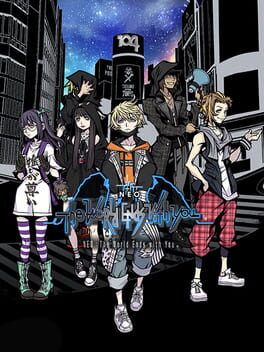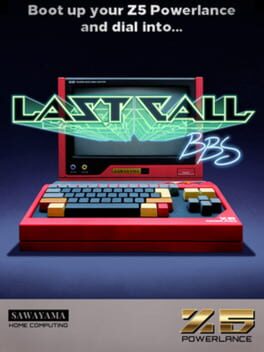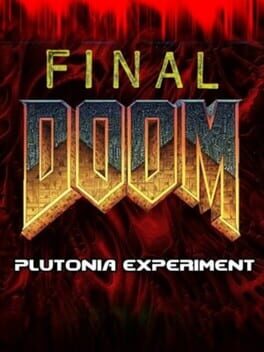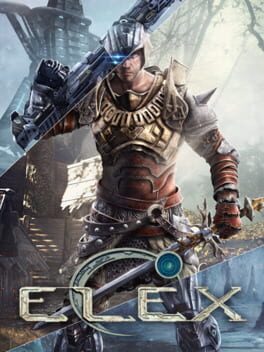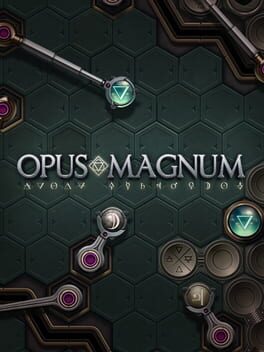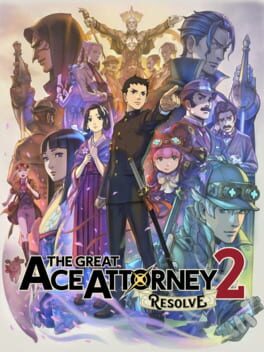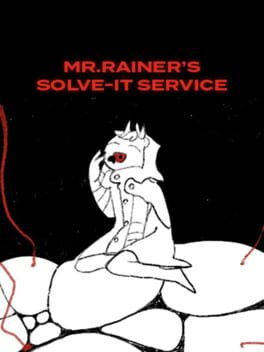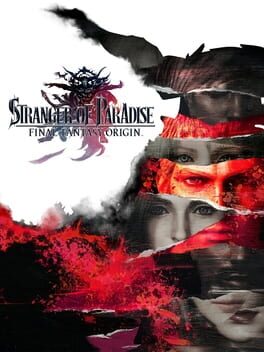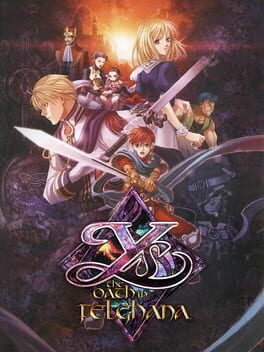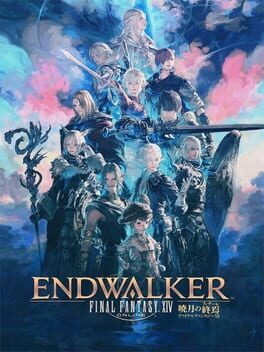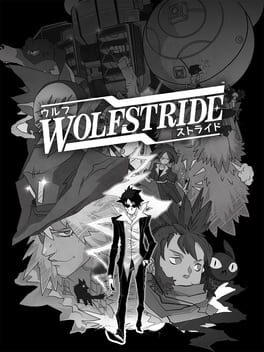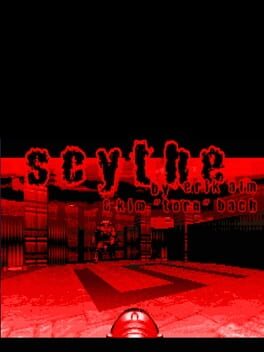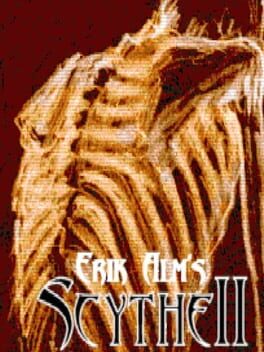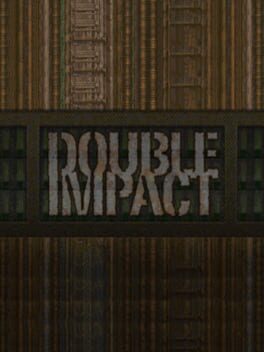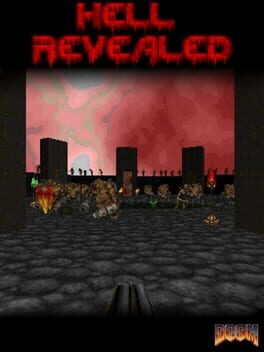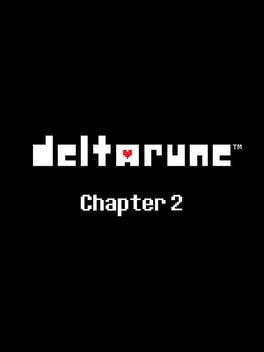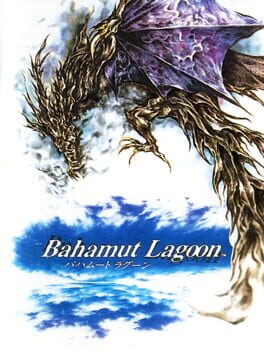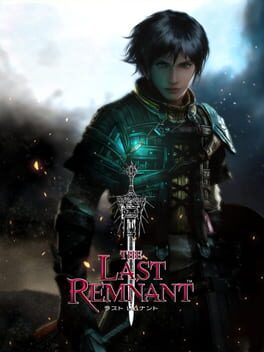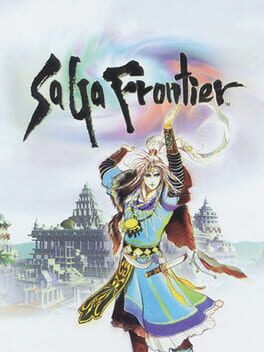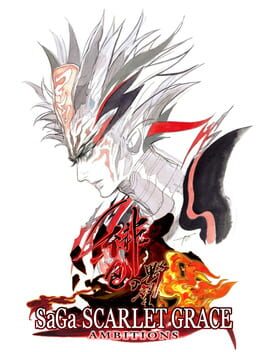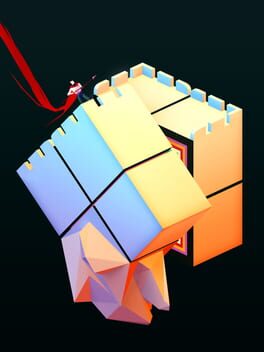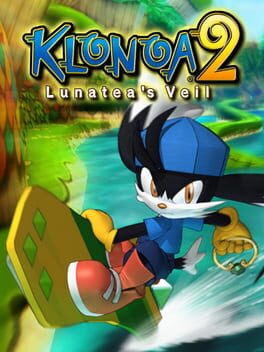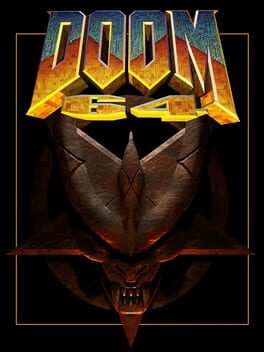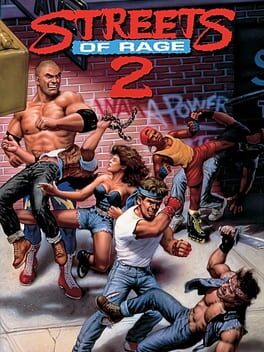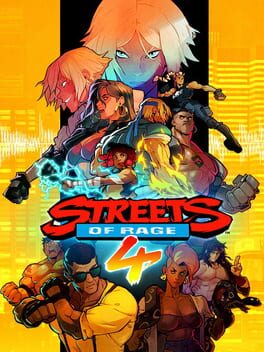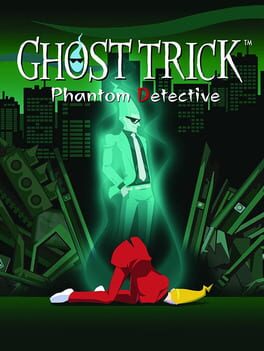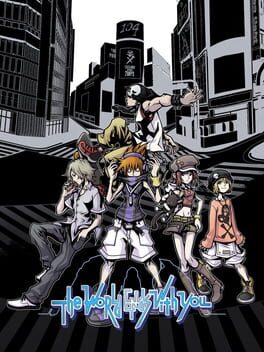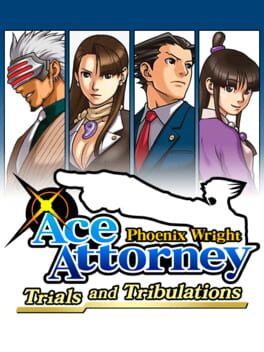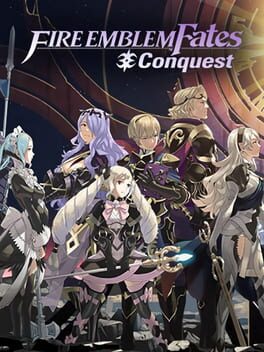112 reviews liked by SGS_Man
After 100%ing the game and getting absolutely everything it had to offer, I can safely say that it is by far one of the best sequels I’ve had the pleasure of playing. Whether or not it surpasses the original is something that can be debated on but I find it to be easily on par.
The storytelling and characterization this time around goes for a more subtler approach compared to the original and relies on character interactions and the way these evolve throughout the game, which ties into its main theme: identity. If OG TWEWY was about how relationships can change and affect the individual, then NEO TWEWY is the opposite in that it’s about how individual change affects that person's relationships. On the surface, they might seem like the same thing, but they’re really not because it’s through this lens that you’re able to see how the characters evolve and change, with our main character Rindo being the perfect examples of this.
Rindo’s an almost painfully realistic depiction of your average teenager: a guy that has no confidence in himself and the decisions he makes and tries to pass off his responsibilities onto other people whenever he gets the chance to. He’s quiet, reserved, and very closed off, only ever truly opening up to his friend Swallow, and you can see this constantly when you peer into his head and observe how he neurotically commentates on every move he or someone else does. He also has the tendency to take the people around him for granted. In some ways, he’s lot like Neku in the sense that he’s cut himself off from other people but whereas Neku actively rejected other people, Rindo just doesn’t care to get close to them. Even when their team needed more people so they could survive just one week, Rindo preferred relying on the skills Sho had already shown them rather than even trying to meet Nagi, and he might not’ve recruited her if not for him trying to avoid having her Dive into his head again. There’s also how he didn’t confide into his teammates about his time travel abilities until Sho dragged it out in the open for the others to know about. To Rindo, following along with who he already knew while not confiding in them kept him safe and able to just slip through life without having to worry. In that sense, I honestly feel that his arc is more organic and fluid compared to Neku’s and I say this as someone who loves Neku’s character arc. As the game goes on, he learns to takes charge, listens to his teammates fully, seeks and reaches out to people, and overpasses his aversion of going towards people to make the first connection. He’s actually the one willing to do the first step and remind people of what’s at stake, instead of being lead around on a whim by others.
Over the course of the game/Game, Rindo grows from someone not deciding anything to avoid the responsibility of a bad outcome and bristling when called out on that, to someone becoming brave enough to fully undertake the weight of such decisions, willing to risk himself in a bit more and as a leader, and fully expressing his opinion about things and plans instead of just poking holes into others’ ideas and appropriating their advices as his like he did with certain influences in his life.
You get to see this progression for most of the other characters in the game, with Shoka in particular being one of the best written characters across both TWEWY games in my opinion thanks to her characterization and the subtleties in her actions. That’s not to say this approach is perfect as the pacing can be pretty slow at times and some characters could’ve definitely benefitted by having more screentime but overall, I still found that NEO had a valuable message and theme to deliver in spite of it all.
Next up is the combat and hoo boy do I have a lot to say about it. It most definitely isn’t perfect, with its issues mostly boiling down to the lower enemy variety compared to the original (which had its fair share of recolors as well, mind you) and the camera being an annoyance at some points but by God, they somehow nailed the combat and it’s honestly tied with the original as one of my favorite JRPG battle systems. This time around, each character is mapped to a button to the controller (you can switch around which characters has what pin so it isn’t set in stone for which character can use a certain pin). Each attack type in the game has a condition that requires you to “Drop the Beat”, basically a combo finisher that’s tacked onto each pin and they each have their own variations. For example, some will have you inflicting status ailments on enemies, others will have you launching enemies in the air or into walls and some will have you piledriving them into the ground and so on and so forth. You do this in order to gradually build your Groove meter and unleash Mashups, which are 15 different elemental attacks that each have their own unique effect and can be activated and used on the battle field while you’re doing combos, such as summoning a giant gravitational ball of energy to suck enemies in, covering the ground with ice spikes that freeze enemies on contact and can have you bounce them around on the spikes for additional damage, stopping time to freeze absolutely everything to place, and more. There are pins with special abilities that reward you greatly when you set certain combos up right, whether it’s using knockdown pins to activate Grave Marker’s finisher, using launcher pins to increase the power of aerial pins such as Leo Armo or Meteor Strike, using chain pins to entangle enemies and increase the power of Drift Tackle or Swift Strike pins and more.
You have a wide variety of options that range from straight attacks, wide attacks, knockbacks, launchers (and following launchers), knockdowns, quick safe attacks, slow high investment attacks in exchange for higher damage/combo opportunities, repositioning attacks, crowd AoEs and more. You also have options for ranged attacks (with bullets, lasers, sweeping shockwaves, rockets for differing effects), charge attacks, staggering enemies and dispersing crowds, repositioning (enemies and yourself), multi-hit and freezing enemies, planting mines, and more.
On top of all of this, each pin has different attack speeds, damage outputs, ranges, and special utilities, which encourages you to mix and match in order to find the best possible combination for you and equip a deck that is highly synergized. Even low-powered pins end up being useful in the lategame thanks to quick reboot time compared to the higher damaging types, which is also great for building up Groove faster and getting those 6x Mashups, making for an incredibly balanced system for the most part.
Any good action game worth its salt rewards good positioning and NEO does that and then some and even expands on it compared to the original in multiple ways, both in regard to how you can lay down traps to catch Noise off guard and how you can utilize Mashups in extending your combos or take down enemies quickly. This also applies to how pins work as well.
Take how Massive Hit targets enemies for example. If you line it up just right, you can catch multiple enemies in your line of fire while you're on your way to kick the target into next week or up into the sky. Same thing also applies to Assassin Strike and I actually used this trick to stun multiple enemies at the same time. There's also some cool stuff that you can pull off with Patrol Rounds. The thing about them is how they ALWAYS come back to you after you launch them and if you position yourself to have the Patrol Round come back at you in a specific way by running to a spot, you can catch multiple enemies in the arc as the rounds makes their way towards you. This method also makes taking down Chameleon Noise a breeze since they're usually right by enemies and when you target the Noise next to them, they tend to get caught in the crossfire, which makes them easy to spot. Grenade Launcher, Patrol Round, Psychic Shotgun, Storm, and Diffusion Beam pins are especially useful for this.
Another cool thing about NEO is how even pins with the same Psych archetype actually have differing ways to make them stand apart mechanically.
For example, the Patrol Round pins each have different arcs that effect how they return towards you and impact enemies.
Cony x Cony (the Gravity variant) shoots out 5 different boomerangs and come back to you as five while Stop the Music (Burst variant you win from Scramble Slam) shoots out 3 different boomerangs but come back to you as one.
On paper, this might make Stop the Music sound worse but you have to keep their Beatdrop conditions in mind. Cony x Cony requires for an enemy/boss to be knocked down to the ground and/or launched in order for you to activate its Beatdrop whereas Stop the Music just has you hitting the enemy with the explosion it activates in order to get the Beatdrop. Little stuff like this can have an impact on how you approach combat when it comes to the bosses and mob design and it's like this for a lot of pins in the game, which I appreciate.
All in all, it’s a very robust and fun battle system with a lot of depth to its various mechanics and the bosses show these aspects off quite nicely, providing fun and unique mechanics of their own as well as a decent challenge if you’re fighting on the higher difficulties. A lot of people are under the impression that button-mashing is the optimal strategy and while that can probably get you through the main game on the lower difficulties, they fail to consider these factors:
-Noise have built-in forced retaliation (think revenge values from Kingdom Hearts.) The enemies will flash yellow, while during this, the damage they received, during combos after the fact, multiplies the enemy attack by how much damage was done to it, then it will flash red and instantly counter attack you with the damages built up in its system. The system is different for a few enemies but will instantly begin the moment they flash yellow. Which means that just button mashing can get you killed, especially when you’re engaging in long chain battles and the revenge values become far more frequent throughout each round.
-There are multiple pin set-ups that highly reward you for timing your combos right in order to build up the most Groove in one go, especially when you unlock the Beatdrop sweetspot mechanic later on that can increase your Groove intake when hitting the Beatdrop in a certain spot (which also differs depending on the pin)
-Ememy design has a decent amount of variety, forcing you to think about what sort of pins and threads to bring into battle as there’s not really one deck that makes short work of every enemy. The dinos, mammoths, and birds are prime examples of these
-Just mashing the buttons all at once will leave you unable able to properly counterattack against particularly troublesome enemies and will most likely lead to you dying multiple times
-The game itself ranks you on how much time you’ve taken playing through a chain as well as how much damage you’ve taken overall, incentivizing you to get better at the mechanics as higher rankings leads to higher PP intake, which is incredibly handy for leveling up and evolving pins.
Another thing I want to talk about is the music and man, they absolutely nailed it yet again. Much like the original, NEO covers a large variety of genres while also going for it’s own distinct vibe at the same time. Whereas the original went for a mix of J-pop, disco, and J-rock, with some stray metal, piano, and rap here and there, NEO goes for a more balanced mix of J-rock and metal, with more rap and pop mixed into tracks with heavier sections, as well as a greater emphasis on mashups, electric instruments, and blended-up and crunchier versions of old songs. That’s not to say it doesn’t have its own fair share of genre variety, however, as the game also contains various genres such as liquid DnB, techno, acoustic, club, drum n bass, power pop, symphonic nu-metal, and more. On top of that, the songs in NEO are much more closely tied to the themes of the game and the progression of the characters, with some even cleverly foreshadowing character details that get revealed later on, such as We’re Losing You and Shibuya Survivor. One thing in particular that I want to talk about in regards to the soundtrack is the inclusion of Soundsurfing and how much I love it’s implementation. Not only is it a clever way to speed up overworld traversal and make traversing through Shibuya a breeze, it’s gives you additional Groove intake bonuses that carry over to a round, which is an incredible use of gameplay mechanics synergizing well with one another. On top of that, Soundsurfing gives almost every song in the game additional and unique percussive elements to spice up the soundtrack even more, giving the music even more variety, which is genuinely impressive as hell. And lastly, it adds up to one incredible usage in the final boss fight.
All-in-all, NEO is a fantastic game and a more than worthy successor to one of the best games on the DS and I tip my hat off to the devs for managing to create another compelling experience even after all of these years.
And with that, I bid you adieu.
The storytelling and characterization this time around goes for a more subtler approach compared to the original and relies on character interactions and the way these evolve throughout the game, which ties into its main theme: identity. If OG TWEWY was about how relationships can change and affect the individual, then NEO TWEWY is the opposite in that it’s about how individual change affects that person's relationships. On the surface, they might seem like the same thing, but they’re really not because it’s through this lens that you’re able to see how the characters evolve and change, with our main character Rindo being the perfect examples of this.
Rindo’s an almost painfully realistic depiction of your average teenager: a guy that has no confidence in himself and the decisions he makes and tries to pass off his responsibilities onto other people whenever he gets the chance to. He’s quiet, reserved, and very closed off, only ever truly opening up to his friend Swallow, and you can see this constantly when you peer into his head and observe how he neurotically commentates on every move he or someone else does. He also has the tendency to take the people around him for granted. In some ways, he’s lot like Neku in the sense that he’s cut himself off from other people but whereas Neku actively rejected other people, Rindo just doesn’t care to get close to them. Even when their team needed more people so they could survive just one week, Rindo preferred relying on the skills Sho had already shown them rather than even trying to meet Nagi, and he might not’ve recruited her if not for him trying to avoid having her Dive into his head again. There’s also how he didn’t confide into his teammates about his time travel abilities until Sho dragged it out in the open for the others to know about. To Rindo, following along with who he already knew while not confiding in them kept him safe and able to just slip through life without having to worry. In that sense, I honestly feel that his arc is more organic and fluid compared to Neku’s and I say this as someone who loves Neku’s character arc. As the game goes on, he learns to takes charge, listens to his teammates fully, seeks and reaches out to people, and overpasses his aversion of going towards people to make the first connection. He’s actually the one willing to do the first step and remind people of what’s at stake, instead of being lead around on a whim by others.
Over the course of the game/Game, Rindo grows from someone not deciding anything to avoid the responsibility of a bad outcome and bristling when called out on that, to someone becoming brave enough to fully undertake the weight of such decisions, willing to risk himself in a bit more and as a leader, and fully expressing his opinion about things and plans instead of just poking holes into others’ ideas and appropriating their advices as his like he did with certain influences in his life.
You get to see this progression for most of the other characters in the game, with Shoka in particular being one of the best written characters across both TWEWY games in my opinion thanks to her characterization and the subtleties in her actions. That’s not to say this approach is perfect as the pacing can be pretty slow at times and some characters could’ve definitely benefitted by having more screentime but overall, I still found that NEO had a valuable message and theme to deliver in spite of it all.
Next up is the combat and hoo boy do I have a lot to say about it. It most definitely isn’t perfect, with its issues mostly boiling down to the lower enemy variety compared to the original (which had its fair share of recolors as well, mind you) and the camera being an annoyance at some points but by God, they somehow nailed the combat and it’s honestly tied with the original as one of my favorite JRPG battle systems. This time around, each character is mapped to a button to the controller (you can switch around which characters has what pin so it isn’t set in stone for which character can use a certain pin). Each attack type in the game has a condition that requires you to “Drop the Beat”, basically a combo finisher that’s tacked onto each pin and they each have their own variations. For example, some will have you inflicting status ailments on enemies, others will have you launching enemies in the air or into walls and some will have you piledriving them into the ground and so on and so forth. You do this in order to gradually build your Groove meter and unleash Mashups, which are 15 different elemental attacks that each have their own unique effect and can be activated and used on the battle field while you’re doing combos, such as summoning a giant gravitational ball of energy to suck enemies in, covering the ground with ice spikes that freeze enemies on contact and can have you bounce them around on the spikes for additional damage, stopping time to freeze absolutely everything to place, and more. There are pins with special abilities that reward you greatly when you set certain combos up right, whether it’s using knockdown pins to activate Grave Marker’s finisher, using launcher pins to increase the power of aerial pins such as Leo Armo or Meteor Strike, using chain pins to entangle enemies and increase the power of Drift Tackle or Swift Strike pins and more.
You have a wide variety of options that range from straight attacks, wide attacks, knockbacks, launchers (and following launchers), knockdowns, quick safe attacks, slow high investment attacks in exchange for higher damage/combo opportunities, repositioning attacks, crowd AoEs and more. You also have options for ranged attacks (with bullets, lasers, sweeping shockwaves, rockets for differing effects), charge attacks, staggering enemies and dispersing crowds, repositioning (enemies and yourself), multi-hit and freezing enemies, planting mines, and more.
On top of all of this, each pin has different attack speeds, damage outputs, ranges, and special utilities, which encourages you to mix and match in order to find the best possible combination for you and equip a deck that is highly synergized. Even low-powered pins end up being useful in the lategame thanks to quick reboot time compared to the higher damaging types, which is also great for building up Groove faster and getting those 6x Mashups, making for an incredibly balanced system for the most part.
Any good action game worth its salt rewards good positioning and NEO does that and then some and even expands on it compared to the original in multiple ways, both in regard to how you can lay down traps to catch Noise off guard and how you can utilize Mashups in extending your combos or take down enemies quickly. This also applies to how pins work as well.
Take how Massive Hit targets enemies for example. If you line it up just right, you can catch multiple enemies in your line of fire while you're on your way to kick the target into next week or up into the sky. Same thing also applies to Assassin Strike and I actually used this trick to stun multiple enemies at the same time. There's also some cool stuff that you can pull off with Patrol Rounds. The thing about them is how they ALWAYS come back to you after you launch them and if you position yourself to have the Patrol Round come back at you in a specific way by running to a spot, you can catch multiple enemies in the arc as the rounds makes their way towards you. This method also makes taking down Chameleon Noise a breeze since they're usually right by enemies and when you target the Noise next to them, they tend to get caught in the crossfire, which makes them easy to spot. Grenade Launcher, Patrol Round, Psychic Shotgun, Storm, and Diffusion Beam pins are especially useful for this.
Another cool thing about NEO is how even pins with the same Psych archetype actually have differing ways to make them stand apart mechanically.
For example, the Patrol Round pins each have different arcs that effect how they return towards you and impact enemies.
Cony x Cony (the Gravity variant) shoots out 5 different boomerangs and come back to you as five while Stop the Music (Burst variant you win from Scramble Slam) shoots out 3 different boomerangs but come back to you as one.
On paper, this might make Stop the Music sound worse but you have to keep their Beatdrop conditions in mind. Cony x Cony requires for an enemy/boss to be knocked down to the ground and/or launched in order for you to activate its Beatdrop whereas Stop the Music just has you hitting the enemy with the explosion it activates in order to get the Beatdrop. Little stuff like this can have an impact on how you approach combat when it comes to the bosses and mob design and it's like this for a lot of pins in the game, which I appreciate.
All in all, it’s a very robust and fun battle system with a lot of depth to its various mechanics and the bosses show these aspects off quite nicely, providing fun and unique mechanics of their own as well as a decent challenge if you’re fighting on the higher difficulties. A lot of people are under the impression that button-mashing is the optimal strategy and while that can probably get you through the main game on the lower difficulties, they fail to consider these factors:
-Noise have built-in forced retaliation (think revenge values from Kingdom Hearts.) The enemies will flash yellow, while during this, the damage they received, during combos after the fact, multiplies the enemy attack by how much damage was done to it, then it will flash red and instantly counter attack you with the damages built up in its system. The system is different for a few enemies but will instantly begin the moment they flash yellow. Which means that just button mashing can get you killed, especially when you’re engaging in long chain battles and the revenge values become far more frequent throughout each round.
-There are multiple pin set-ups that highly reward you for timing your combos right in order to build up the most Groove in one go, especially when you unlock the Beatdrop sweetspot mechanic later on that can increase your Groove intake when hitting the Beatdrop in a certain spot (which also differs depending on the pin)
-Ememy design has a decent amount of variety, forcing you to think about what sort of pins and threads to bring into battle as there’s not really one deck that makes short work of every enemy. The dinos, mammoths, and birds are prime examples of these
-Just mashing the buttons all at once will leave you unable able to properly counterattack against particularly troublesome enemies and will most likely lead to you dying multiple times
-The game itself ranks you on how much time you’ve taken playing through a chain as well as how much damage you’ve taken overall, incentivizing you to get better at the mechanics as higher rankings leads to higher PP intake, which is incredibly handy for leveling up and evolving pins.
Another thing I want to talk about is the music and man, they absolutely nailed it yet again. Much like the original, NEO covers a large variety of genres while also going for it’s own distinct vibe at the same time. Whereas the original went for a mix of J-pop, disco, and J-rock, with some stray metal, piano, and rap here and there, NEO goes for a more balanced mix of J-rock and metal, with more rap and pop mixed into tracks with heavier sections, as well as a greater emphasis on mashups, electric instruments, and blended-up and crunchier versions of old songs. That’s not to say it doesn’t have its own fair share of genre variety, however, as the game also contains various genres such as liquid DnB, techno, acoustic, club, drum n bass, power pop, symphonic nu-metal, and more. On top of that, the songs in NEO are much more closely tied to the themes of the game and the progression of the characters, with some even cleverly foreshadowing character details that get revealed later on, such as We’re Losing You and Shibuya Survivor. One thing in particular that I want to talk about in regards to the soundtrack is the inclusion of Soundsurfing and how much I love it’s implementation. Not only is it a clever way to speed up overworld traversal and make traversing through Shibuya a breeze, it’s gives you additional Groove intake bonuses that carry over to a round, which is an incredible use of gameplay mechanics synergizing well with one another. On top of that, Soundsurfing gives almost every song in the game additional and unique percussive elements to spice up the soundtrack even more, giving the music even more variety, which is genuinely impressive as hell. And lastly, it adds up to one incredible usage in the final boss fight.
All-in-all, NEO is a fantastic game and a more than worthy successor to one of the best games on the DS and I tip my hat off to the devs for managing to create another compelling experience even after all of these years.
And with that, I bid you adieu.
Last Call BBS
2022
What an immensely sad game.
Zachtronics have done an outstanding job of capturing the melancholy of witnessing an age turning bygone, doubtlessly mirroring the shuttering of the studio with this final release. Last Call BBS is a world of dial-up, of warez, of cracks and hacks, of archaic hardware, and the inherent mystery that comes with exploring obscure corners of the internet. A descriptive blurb and a title are the only things you'll get to inform you about the games you'll be playing, all curated on a local server by the in-game barkeep. It's the kind of "search, experiment, and figure it out yourself" gameplay that's defined virtually every Zachtronics title up to this point, now extending into the meta act of finding and downloading the games to be played.
Of course, the extra layer of navigating a virtual desktop with limited hard drive space doesn't come at the cost of compromising the quality of these games; to the contrary, these are some incredibly impressive titles. Dungeons & Diagrams is a fun Picross-like, the included Solitaire variants are as entertaining as they always are, HACKMATCH is back and expanded, and you've got your completely incomprehensible puzzle games like X'BPGH: The Forbidden Path and "ChipWizard Professional" to help round things out. The last game I mentioned is jokingly referred to in-universe as being indistinguishable as one of either "a game or a CAD program", and they mean it.
You'll probably have noticed from the big, glowing red dot at the top of this review that I've got this marked as abandoned. I didn't finish Last Call, so I couldn't mark it as completed. I don't think I'll ever finish Last Call, so I can't mark it as shelved. This is a dense game. There's a lot here, and I'm not smart enough to see it all through. Okay, it's not that I'm dumb, it's that I don't have a natural acumen for solving the sorts of puzzles that Last Call presents, and I can't seem to learn the skills required to even begin the process. If there's some means of discovering a definitive end to this, I'm not going to see it.
So, I'm a little reticent to publish a review on this. I'm abandoning a game that I liked, a lot. Games which I've enjoyed have managed to sour massively for me as they went on — see Immortality and Asura's Wrath if you need examples — so who's to say that the same couldn't happen for Last Call? There might be later games or puzzles or twists that completely, utterly, retroactively spoil the whole thing. Now, I doubt that's going to happen, but it could.
Even in that theoretical worst outcome, though, I think I've enjoyed too much of Last Call to imagine my opinion lowering far from where it already is. The real joy is in picking and choosing what parts you want to work through, rather than forcing yourself to tackle every single piece of every last bit of content, squeezing out whatever juice you can get before discarding it and moving to the next thing. I'd dare to call Last Call "anti-completionist", provided I felt like justifying that opinion with another eight paragraphs of argumentation.
In a package that's this brimming with games, it's inevitable that you'll find at least something you enjoy. If you want some beginner-level puzzles, you play Dungeons & Diagrams. If you want to ramp up the difficulty and seriously challenge yourself, you play ChipWizard. If you're sick of all of the puzzles and you don't want to think anymore, you play STEED FORCE Hobby Studio and quietly assemble virtual gunpla kits. If you're one of those twisted bastards that actually thought TIS-100 was fun, you can read up on the included Axiom QuickServe dev guides and create your own JavaScript-based "servers" that other players can dial into and play custom games from.
Zach Barth seems to be leaving games behind in favor of teaching, per what I've seen strewn about the Internet. Apparently he got a taste for instructing high school programming classes, and it's became a passion that he wanted to pursue. There have been some pretty negative reactions to this, which surprised me; even as an outsider to the Zachtronics collection, it isn't hard to see that the act of education and the reciprocal act of learning is the through-line connecting their entire catalog.
Of course, Barth later said that he has "a hard time imagining anything other than games in [his] future", even though the team that made up Zachtronics will be disbanding. After being a part of the field for two decades, I suppose it's hard for anyone to imagine him being anywhere else.
Last Call BBS is a wonderful capstone to mourn and celebrate the way that the Internet used to be. I couldn't think of a better way for Zachtronics to close their doors than with this.
Zachtronics have done an outstanding job of capturing the melancholy of witnessing an age turning bygone, doubtlessly mirroring the shuttering of the studio with this final release. Last Call BBS is a world of dial-up, of warez, of cracks and hacks, of archaic hardware, and the inherent mystery that comes with exploring obscure corners of the internet. A descriptive blurb and a title are the only things you'll get to inform you about the games you'll be playing, all curated on a local server by the in-game barkeep. It's the kind of "search, experiment, and figure it out yourself" gameplay that's defined virtually every Zachtronics title up to this point, now extending into the meta act of finding and downloading the games to be played.
Of course, the extra layer of navigating a virtual desktop with limited hard drive space doesn't come at the cost of compromising the quality of these games; to the contrary, these are some incredibly impressive titles. Dungeons & Diagrams is a fun Picross-like, the included Solitaire variants are as entertaining as they always are, HACKMATCH is back and expanded, and you've got your completely incomprehensible puzzle games like X'BPGH: The Forbidden Path and "ChipWizard Professional" to help round things out. The last game I mentioned is jokingly referred to in-universe as being indistinguishable as one of either "a game or a CAD program", and they mean it.
You'll probably have noticed from the big, glowing red dot at the top of this review that I've got this marked as abandoned. I didn't finish Last Call, so I couldn't mark it as completed. I don't think I'll ever finish Last Call, so I can't mark it as shelved. This is a dense game. There's a lot here, and I'm not smart enough to see it all through. Okay, it's not that I'm dumb, it's that I don't have a natural acumen for solving the sorts of puzzles that Last Call presents, and I can't seem to learn the skills required to even begin the process. If there's some means of discovering a definitive end to this, I'm not going to see it.
So, I'm a little reticent to publish a review on this. I'm abandoning a game that I liked, a lot. Games which I've enjoyed have managed to sour massively for me as they went on — see Immortality and Asura's Wrath if you need examples — so who's to say that the same couldn't happen for Last Call? There might be later games or puzzles or twists that completely, utterly, retroactively spoil the whole thing. Now, I doubt that's going to happen, but it could.
Even in that theoretical worst outcome, though, I think I've enjoyed too much of Last Call to imagine my opinion lowering far from where it already is. The real joy is in picking and choosing what parts you want to work through, rather than forcing yourself to tackle every single piece of every last bit of content, squeezing out whatever juice you can get before discarding it and moving to the next thing. I'd dare to call Last Call "anti-completionist", provided I felt like justifying that opinion with another eight paragraphs of argumentation.
In a package that's this brimming with games, it's inevitable that you'll find at least something you enjoy. If you want some beginner-level puzzles, you play Dungeons & Diagrams. If you want to ramp up the difficulty and seriously challenge yourself, you play ChipWizard. If you're sick of all of the puzzles and you don't want to think anymore, you play STEED FORCE Hobby Studio and quietly assemble virtual gunpla kits. If you're one of those twisted bastards that actually thought TIS-100 was fun, you can read up on the included Axiom QuickServe dev guides and create your own JavaScript-based "servers" that other players can dial into and play custom games from.
Zach Barth seems to be leaving games behind in favor of teaching, per what I've seen strewn about the Internet. Apparently he got a taste for instructing high school programming classes, and it's became a passion that he wanted to pursue. There have been some pretty negative reactions to this, which surprised me; even as an outsider to the Zachtronics collection, it isn't hard to see that the act of education and the reciprocal act of learning is the through-line connecting their entire catalog.
Of course, Barth later said that he has "a hard time imagining anything other than games in [his] future", even though the team that made up Zachtronics will be disbanding. After being a part of the field for two decades, I suppose it's hard for anyone to imagine him being anywhere else.
Last Call BBS is a wonderful capstone to mourn and celebrate the way that the Internet used to be. I couldn't think of a better way for Zachtronics to close their doors than with this.
Ah Classic Doom, despite playing majority of Doom1 , Doom 2 and TNT Evilution I couldn't really finish any of them, at one point I was bored, frustrated by the obtuse level progression or the game just felt too long, I wont say that Plutonia has none of those problems, a few of the levels are bland and some of the traps can feel unnecessarily mean.
But I did it, beat all of Plutonia pistol start on Ultra violence and had a great fucking time, I hate the mean starts in some of the levels but when I had weapons and ammo and saw a trap I got a wicked grin on my face equivalent to Doom Guy picking up a new weapon. The combat design is mostly excellent showing the strength of Doom 2 monsters in a way the base game never did. Especially Revenants and Archviles. Countless times dying to the Revenants homing missile and Archvile's fiery sightlines, I was forced to learn how to deal with them, maybe even git gud. The Archvile usage as both a regular enemy and something that stays out of sight and acts as a hazard resurrecting fallen enemies is especially noteworthy. I love the way Plutonia mixes up monsters there's rarely a time where it's 1 boring enemy you have to deal there's always a variety of projectiles coming your way to kill you especially in any open and larger fights.
I also like how it mostly ditches weaker weapons like the pistol and pump action shotgun, giving you heavy ammunition with shotgun shells and rockets, the Rocket Launcher is basically your main weapon for half the maps.
I appreciate the length and pacing of the levels as well shorter and on the intense side very often, there's not much boring downtime.
After Plutonia I feel like I understand classic Doom better, I have certainly gotten better at the game and I can see the intricacies in weapon balance and monster design that makes Doom 2 an enduring legend to this day.
But I did it, beat all of Plutonia pistol start on Ultra violence and had a great fucking time, I hate the mean starts in some of the levels but when I had weapons and ammo and saw a trap I got a wicked grin on my face equivalent to Doom Guy picking up a new weapon. The combat design is mostly excellent showing the strength of Doom 2 monsters in a way the base game never did. Especially Revenants and Archviles. Countless times dying to the Revenants homing missile and Archvile's fiery sightlines, I was forced to learn how to deal with them, maybe even git gud. The Archvile usage as both a regular enemy and something that stays out of sight and acts as a hazard resurrecting fallen enemies is especially noteworthy. I love the way Plutonia mixes up monsters there's rarely a time where it's 1 boring enemy you have to deal there's always a variety of projectiles coming your way to kill you especially in any open and larger fights.
I also like how it mostly ditches weaker weapons like the pistol and pump action shotgun, giving you heavy ammunition with shotgun shells and rockets, the Rocket Launcher is basically your main weapon for half the maps.
I appreciate the length and pacing of the levels as well shorter and on the intense side very often, there's not much boring downtime.
After Plutonia I feel like I understand classic Doom better, I have certainly gotten better at the game and I can see the intricacies in weapon balance and monster design that makes Doom 2 an enduring legend to this day.
Elex
2017
ELEX marks Piranha Bytes’ sixth take on their tried-and-true Gothic formula. For the non-Europeans those who have never played any Piranha Bytes games before, here's a quick introduction. PB games stand out from other RPGs through their small yet dense game worlds. Players progression is soft-gated through high-level enemies rather than physical barriers. This way skilled enough players can edge their way into parts of the world they’re not supposed to be in yet. Then there's a progression curve that–relative to most RPGs–has you start from level negative five. You will start off as such a useless sod that even a basic oversized chicken is a major threat to your life; something you must grow to overcome by running away and kissing the boots of those stronger than you. This time, the world is one of the biggest PB has ever made, and you get a jetpack right at the start of the game. How does it pan out?
The exploration in ELEX is downright addicting. What starts as a short stroll in the woods towards a quest objective turns into a constant string of “oooh, what’s that?”`. You'll end up taking detour after detour, going from one interesting landmark to the next. After scavenging everything you can find–only an hour later will you remember what it was you came here for in the first place. Despite the size of ELEX's world, it’s consistently dense with stuff to explore, and there's always another landmark in sight of another. The only exception is the region of Ignadon, which f.e. has only half or 2/3rds the amount of quests compared to the other two main regions, despite being as large. It also helps that the quest design in ELEX is good at sending you towards different parts of the world where you can (hopefully) get sidetracked.
ELEX’s world is on an intrinsic level appealing to explore because of the jetpack. In past PB games the main obstacles you faced were enemies blocking your path, but now the terrain itself is a major obstacle. The world terrain features much more vertical variation compared to previous PB games, as there are way more structures and landmarks that make you go “can I climb that?”. 99% of the time, you can, and 99% of the time you’ll also find an item up there as well! There are almost no invisible walls in ELEX that get in the way of your exploration; the only limit is your jetpack fuel.
One would think that a jetpack would trivialize combat and exploration, but turns out it's quite well balanced! The jetpack only allows you to gain height for about six seconds, and takes about three times as long to recharge from 0 to 100. Fuel only recharges if you’re standing on a solid surface. Infinite flight isn’t possible, and fuel takes too long to recharge to spam the jetpack in combat. Climbing terrain then isn’t a matter of ‘hold spacebar to climb’. It does take planning and fuel management to fly over gaps and climb buildings. In combat the jetpack doesn’t have much use outside of running away or shooting enemies mid-air.
With flight being a thing, PB was finally forced to address the longstanding issue of using high ground to cheese enemies. PB made the decision to give almost all enemies ranged attacks that can lead you. Meaning, they shoot towards where you are moving towards rather than where you are. As most combat in ELEX takes place on open plains or hills, this is definitely a sensible decision. This way you can’t just fly or circlestrafe to cheese most enemies, now that they can snipe you out of the sky. There are other ranged attack types (such as homing/interruptible hitscan) that ELEX could have used to vary things up, but sadly it never does.
Though the exploration in ELEX is great, its rewards are rather disappointing. Expect to find a lot of junk items, healing/mana potions, some cash, some crafting materials, or a piece of lore. Sometimes you will find an actually powerful piece of gear… with such insane stat requirements that it takes 10 more hours of leveling to equip. All the above is of course still valuable, but the fact that most places in the world yield more of the same makes it rather predictable and unexciting. Of course there must be more low-value than high-value finds to make the latter feel appropriately rewarding, but in ELEX that ratio is too skewed towards the former.
That ELEX reduces the average value gained per square unit explored does make some sense, however. In earlier PB games the worlds were relatively smaller, so for every square meter explored you were more likely to find a high-value item. In ELEX the world is larger, yet just as dense with items. This results in a greater total amount of items to discover, which for a game like this makes the difficulty curve and economy much harder to balance. If ELEX kept the same low/high-value find ratio of the old games, there’d be so many good items to find through a bit of exploration that the player would become too strong too early, likely resulting in the player being bored as they steamroll through most of the world without too much effort. Thus it was necessary to reduce the value you get on average out of exploration. Yet, the end result of the rewards for exploration not being exciting persists. The design challenge here is as follows: How do you maintain a reasonable difficulty curve and keep rewards for exploration exciting, while having a high density of discoverable items spread out across a much larger surface area?
One method ELEX already uses is to ‘split’ high-value items into parts and spread them across the world (akin to collecting Heart Pieces in The Legend of Zelda to create Heart Containers). For example, the world contains a lot of Natural Elex that’s not that useful on its own, but you can combine several pieces to craft Elex Potions for attribute/skill points. There’s also Gemstones, which you can slot into gear to give you minor stat boosts. Smaller Gemstones can then be combined to create larger ones which provide greater boosts. This way there’s a noticeable sense of progression without rewarding the player with too much power for exploring a small part of the world. The implementation of those ideas in ELEX are rather flawed (certain vendors can sell infinite amounts of Natural Elex to the point where finding Natural Elex in the wild doesn’t feel as rewarding anymore, and Gemstones are so rare to find that even in my semi-completionist playthrough I only had enough Gemstones to make one (1) Large Gemstone), but the idea behind them is sound.
ELEX also prevents you from being able to equip powerful gear you find until you meet certain stat requirements. These are necessary in games like this to some extent, but in the context of ELEX they are absurdly balanced. In practice, you often won’t be able to equip that nice gun you found until ten or twenty more hours of leveling up. The costs for increasing your stats increase the higher the stats themselves get (when a stat is over 30 it costs 2 attribute points to raise it by one, and when it’s over 60 it costs five points to raise it by one), so if you also factor in that all armor/weapons have requirements for two different stats, and that most of the gear you find have requirements around 50 or higher, it’s going to take a little while until you get there. To rub more salt in the wound, even if you do finally meet the stat requirements, you’ll find that most high-tier gear you find in the wild isn’t even that good compared to what you can buy from the store and upgrade yourself–on top of having more reasonable stat requirements to boot! In fact, one of the most powerful melee weapons in the game is just a fully upgraded store weapon. So you often can’t use a lot of weapons you find through exploration, and by the time you meet the requirements you’ve most likely found a better alternative already.
This is where the ‘split’ method could be applied to gear. By ‘splitting’ gear into components spread out across the world, the player can still feel a sense of progress for having found a part of a powerful item that can later be combined into one. This should reduce the need for absurd stat requirements in high-tier gear as well. Dividing a high-tier item across several high-level areas or from materials dropped by killing high-level enemies should already pose enough of an implicit stat requirement of its own.
Splitting items has its limits when there’s not that many items to split to begin with, so another solution is to add more items by introducing more item categories. The currently available equipment categories in ELEX are for weapons, shields, body armor, helmets, leg armor, one ring and one necklace, but so you could also add categories for things like gloves, boots, belts, another ring, earrings, or cyber-implants. Since finding a new piece of equipment in the wild only feels valuable if it’s better than your existing gear or if it has an unique use case (like masks that offer radiation/poison resistance, or can be broken down into useful crafting materials), scaling out horizontally by adding more types of gear allows you to populate the world with more equipment that feels unique and valuable. The player being encouraged to multi-class in ELEX is also a good extension of this idea. It means that more weapon types and thus more items one finds through exploration are more relevant to one’s playstyle, whereas earlier PB games tended to focus more on pure builds with a single weapon category. The only caveats to scaling out gear horizontally is that the difficulty curve of the game should factor in the player having an item equipped for every category, and that the economy should factor in the player being able to buy an item for most categories. Keep also in mind that there’s only so many equipment categories you can make: a massive amount of categories could devalue each individual item category, the equipment system could become Armored Core-levels of complicated in a way that doesn’t suit what the game is going for, and having a humanoid player character be equipped with so many different items and baubles could feel a bit silly.
Another option is to scale out vertically by adding more equipment tiers per equipment category. That way there’s a lot more stuff to find per equipment category before you get your hands on the highest-tier gear, thus keeping the world populated with useful items that aren't immediately too powerful. ELEX already applies this by having most weapons come in four minor tiers of power, on top of major tiers per weapon category that have actually different names but the same moveset. For this to properly work, there would also need to be more enemy ‘tiers’ to exercise this newfound power against (be it through new enemy types, variations of existing enemy types, or a pack of lower-tier enemies that you’d have to fight all at once). If mid-tier gear is enough to deal with endgame enemies, then the higher equipment tiers are overkill. You could balance the highest equipment tier around the highest enemy tier, but if you then try to squeeze in a 1000 equipment tiers even though there are only 5 enemy tiers, then the end result is an incremental sense of progression which feels like the only difference between an old and a new weapon is that it does +1 damage. It’s hard to appreciate new gear you found if it’s barely any different from your old gear. You need to strike a good balance between the amount of enemy tiers and weapon tiers, depending on how many assets (weapon/enemy models, animations) you can afford to create and how large you plan to make the world.
Finally you can add another dimension to itemization by letting the player modify and upgrade existing gear using upgrade items. This reduces the need for horizontal scaling by introducing more equipment-relevant items that aren’t actually equipment items. It also reduces the need for vertical scaling, since being able to make low-tier items as strong as high-tier ones would reduce the amount of equipment tiers necessary. Such upgrade items can function as one-time consumables or reusable modifiers you can equip onto equipment, like the aforementioned Gemstones. These upgrade items themselves can also be tiered, split into parts/upgrade when combined, and either apply to all equipment categories or some/one of them. Care must be taken to not make upgrade items too powerful and versatile, otherwise there’s little point in finding better tiers/uniques of an equipment type (beyond slightly higher base stats) when you can already upgrade a low-tier weapon to be as strong as a high-tier one. ELEX manages to avoid this by limiting the amount of Gemstone slots on a weapon by its weapon tier, where higher weapon tiers have more slots to put gemstones into compared to lower tier ones.
To sum it up, we’ve added more item categories, added more tiers per item category, relaxed the stat requirements for items, introduced upgrade items that can modify items, and also split all aforementioned items in parts and recipes for good measure. Will that be enough to populate a large world with useful but not-too-powerful items in a way that’s satisfying? Well, no. Populating the world with useful items like upgrade potions and higher-DPS weapons is one thing, but populating it with interesting items is another. If the only thing better items do is the exact same thing as the previous tiers but with a higher armor/damage value, then all you’ve done is establish more progression for the sake of progression. Such number-goes-up itemization holds nothing new and no surprises by itself, leaving no sense of excitement to be had.
The secret ingredient behind what makes upgrades exciting is precisely all the new gameplay opportunities they open up. Exploration in Metroid wouldn’t be as rewarding if Energy/Missile Tanks were the only items you could discover, since they usually don’t open up any new opportunities. Stat upgrades like Energy/Missile Tanks or all the methods I listed above only serve to make the world feel less empty by populating it with useful rewards, but they cannot be a substitute for creating interesting rewards.
ELEX’s gear rewards aren’t very interesting because the only new things better gear offers is usually just a higher attack/armor value. There is no leg armor that does anything but increase your armor stat, most helmets (aside from sunglasses and the Protective Mask) only increase your armor stat, and all body armor also only increases your armor + poise. Rings and amulets are a bit more special in this regard because they can boost your skills or attributes, but given the aforementioned insane weapon stat requirements, I ended up mostly wearing rings and amulets that let me equip a better weapon. Even unique weapons with special names don’t do anything special. First, they are always based on an existing weapon that you can buy in a store, and thus don’t have any unique moves or modes attached to them that other weapons of the same type don’t have. Second, they might come with elemental buffs or gemstone sockets pre-applied, but since you can craft those on any weapon yourself it hardly makes those “uniques” unique. Aside from the sunglasses and the hilariously broken amulet that lets you survive one lethal blow (an effect you can reset by re-equipping the amulet), most gear does not provide any unique effects or synergies or anything that can change the way you play, like in Diablo or Baldur’s Gate. Since finding a better sword by itself isn’t as satisfying as it is in Gothic or Risen, giving weapons more unique and interesting effects (both in combat and outside of combat) could allow one to populate the world with a greater amount and variety of equipment items without having to scale equipment out horizontally/vertically as much. Either ELEX should have introduced new gear properties/systems to justify strewing so much gear around the world, or it should have shrunk down the world to accommodate the gear potential it already had.
While Gothic and Risen took an even more basic number-go-up approach than ELEX to gear progression, it ironically did work out better for those games. One reason being that each better equipment item that you did get was a major and noticeable upgrade because there were less equipment tiers. Every armor set in Gothic/Risen represented a major milestone that required you to do several quests and save up a ton of money just to be able to unlock it. They wouldn't be as impactful if you'd get more new armor sets in the same timespan. The second reason is that Gothic/Risen's worlds were filled with gatekeeper NPCs who would gib your unarmored underleveled ass if you got too close. Putting on better armor posed an immediately noticeable increase in your chances of survival against them. The excitement from finding better gear in those games stemmed from all the new areas and potential for exploration that opened up for you, much like finding a key item in a Metroidvania. Of course, finding better gear in ELEX serves a similar purpose, but that sense of progression is way more incremental and thus less pronounced due to the greater amount of equipment items, categories, and tiers present in ELEX–not to mention that ELEX has way less clearly defined gate(keeper)s to test your newfound strength against.
The larger world of ELEX has not only caused the value of itemization to be stretched out, but enemy design as well. I’m not upset at the fact that enemies are reskinned at all–that is simply an inevitable reality of game production–but rather that there is not much variation in enemy behavior and attack design. It's a problem that applies not only between enemy variants, but whole enemy archetypes as well. Whether it’s a Biter or a high-level Stalker, how you approach them is identical: dodge their attacks and stunlock them during the gaps in their attack strings for as long as your stamina and surrounding enemies allow. The only variables that change is the HP/armor/damage on the enemy, whether they have ranged attacks at all, and the animations + punish/dodge windows in their attack strings. Dealing with melee attacks is mainly a matter of timing your backstep/roll button, and rarely about positioning, which curbs the potential variety in enemy melee attacks. Ranged attacks too almost often only come in the form of a projectile with leading, but never spreadshots/lasers/homing/area-of-denial attacks/etc. There are only a few NPCs that use explosives, but that’s about it. Enemy behavior (such as how aggressive they are, how they respond to your actions, whether they can interact with other enemies such as by buffing others or use group tactics) also remains the same throughout. Enemies trying to impede you indirectly (such as by inflicting debuffs, altering the environment, etc.) is also something that rarely ever happens. Only humanoid enemies behave differently from wildlife since they can block your attacks and prefer to use ranged attacks at range. While there are several firearms with unique firemodes and spells and stims available to the player, humanoid NPCs don’t seem very interested in using these. The end result is that once you’ve gotten familiar with the combat system and gotten some decent gear, each fight will play out similarly. For a game where you’ll be doing a lot of fighting, that is not exactly a boon to making each part of the world feel unique.
Even if the enemy NPCs and their variants were more varied in behavior and how you had to fight them, there’s still the issue of having to spread them out across the world in a way that’s not repetitive. There’s only so many enemies and variants that can be reasonably put in the game after all, especially with Piranha Bytes’ AA-level budget and manpower. For this reason it’s important that existing enemy types are combined with each other to create new unique combat scenarios with the same assets, and that enemies are designed in a way where they can synergize and play off of each other to facilitate this approach to encounter design. This may sound asinine to bring up (especially if you’ve read my other reviews), but it bears repeating in ELEX’s case. External modifiers (things like difficult terrain, weather, environmental hazards, interactable environmental objects, or other magic nonsense) can be overlaid on top of a combat zone to multiply the amount of mileage you get out of the few enemy types you have. This would however require that enemies more often attack you in groups/packs, and that they aren’t as susceptible to being picked off one-by-one. That would otherwise defeat the entire point of combining enemies to create new combat scenarios. Of course, even with the above there’s only so many combinations you can make, but at that point you should ask yourself whether your world isn’t just too big to accommodate what little content you have.
That brings us to the second main culprit of ELEX’s lackadaisical balancing: it’s utter and total devotion to non-linear progression. ELEX takes the non-linearity of its forebears even further by letting you go anywhere you want after you exit the tutorial zone, with almost no invisible barriers or story gates holding you back. Such non-linearity doesn’t need to be a bad thing at all. If anything, ELEX’s quest design massively benefits from being able to progress quests out-of-order by being able to find key items or deal with key NPCs before having even started the relevant quests (unlike prior Gothic games where said items/NPCs only spawn after having started the quests… in locations you’ve already explored). Rather, the issue with ELEX’s approach of total freed.om of progression is that it makes it significantly more difficult (but not impossible) to balance character progression, item progression, story progression, and enemy populations, since the player can tackle most content in any order. It’s possible to predict non-linear outcomes and entry points to smaller isolated entities like quests and dungeons, but how do you as a designer predict such things for a massive overworld?
Prior PB games were renowned for their freedom of exploration (especially relative to most mainstream RPGs at the time), but they were–for good reason–not that free. The crux lies in how the games handle how the worlds of those games changed as the main story progressed.
In Gothic I, when the main story moved to a new chapter, most of its world got refreshed with new content. Wildernesses would be repopulated with higher-level enemies (but lower-level enemies would not be despawned, thus not screwing you over if you didn’t systematically exterminate every single NPC for XP per chapter), and NPCs would offer new quests. This meant that the world by hand adjusted itself to match the player’s progress in strength, and also helped the world feel alive by having it respond to changes in the main story. Yet, this approach of refreshing the entire world can only realistically work when its surface area is small enough and when the new content itself is fresh enough. The greater the surface area, the more content would need to be refreshed, which from a production standpoint becomes exponentially more taxing. Not to mention that the player would be expected to sweep most of the world again just to come into contact with the new content, which is something that increasingly feels like forced backtracking and padding the larger the world is. This approach also only works if the refreshed content has truly new story/gameplay ramifications, otherwise it too will come off as padding.
Gothic II had a larger world compared to its prequel, and instead of periodically refreshing the entire game world, it instead cleverly decided to refresh only one part of it. The way that worked is by structuring the world around a central hub–the Khorinis Mainland. In one chapter the player would explore the mainland, then the next chapter a hard-gated border zone would be unlocked (the Old Valley of the Mine, Jharkendar) featuring higher-level content appropriate to the player’s expected level at that point in the main story. The main story then expects the player to explore and do quests in that area, after which they’re led back to the Mainland, which has since been refreshed with new content while the player was away in a border area. This usually brought with it a meaningful change in the situation, such as the introduction of Seekers or an Orc invasion, after which the process repeats itself. Since the border areas are situated on the borders of the world, the player is less likely to pass through them again while backtracking or doing Mainland quests, which means that their lack of new content won’t be noticed. The fact that all the refreshed content is only placed in the central hub/crossroads of the world means that the player is more likely to “organically” (i.e. guided by the designer’s graceful hand) come across all the changes and new content as they’re backtracking. This way they are more likely to engage with it out of their own curiosity and initiative, rather than being told by an NPC that they should investigate something in position XY, which can feel like it is invalidating player agency. Now that the designer can reasonably predict how the player progresses through the world, new level-appropriate content can be placed in areas that the player is likely to visit and come across.
Now compare this to ELEX. Here, almost nothing is gated, and after the tutorial zone the player can go about anywhere anytime. The fact that there’s shit to explore in practically every direction makes it very likely for the player to get pulled into every which way, making predicting player progression through the world rather difficult.
Besides that, ELEX has only three story acts, where the bulk of all side-quests (save for some companion quests) can be completed in the first act. There is no pressing reason to progress the main story, and if you’ve played a few RPGs, you are most likely used to completing as much of the side content as possible before progressing the main story (out of a merited fear of the sidequests permanently disappearing otherwise, as is already the case in ELEX with the Domed City). If you do all the sidequests first and the main story second, then the world will appear barren and its settlements lifeless now that there's no reason to interact with the rest of the world. Only the Domed City changes noticeably after the main story progresses, and even then it doesn’t offer you any new content when it does.
For this reason it would have helped if there were more main story acts and if more sidequests were gated in later acts, but this presents another issue: how do you notify the player that there's new quests available across vastly different parts in the world? Now that the designer cannot predict how the player will backtrack and place new content along that path, either the player must manually check each settlement and/or NPC to see if anything's new, which is time-consuming, or the player must be notified through either phone calls or messenger NPCs spawning near you to notify you that's something new. But the latter has its limits; it feels a bit silly if after a story act change you are bombarded with a dozen NPCs at once telling you you can progress their questline (which is something that actually happens when you visit your companion hub after a story act change). Given the design challenges here, it's understandable why PB would skip all this hassle by just making all side-quests available from the start.
The above paragraphs mostly concern themselves with anticipating progress between major zones of the world, but what about gating progress within those zones? The most common approach by PB games is to have high-level enemies soft-gate your progress, and nudge you towards areas more suited for your level. Instances of this do exist in ELEX, but they seem to be rather applied for guarding small buildings or inlets containing phat loot, rather than guarding larger areas. Even if higher-level enemies were spread out across larger areas, they still wouldn't be effective gatekeepers since enemies in ELEX have trouble chasing you down at all. Not to mention that it makes slipping by them rather unrewarding because of how easy it then tends to be. One of the reasons for this is that enemies never sprint towards you at full speed. Bizarrely, enemies in ELEX can sprint at high speeds, but they only ever do this if you point a ranged weapon at them. The jetpack also makes it easier to simply fly over any would-be gatekeepers, especially once you know how to dodge leading projectiles. That is something that can only be solved by introducing new ranged attacks for enemies that are significantly harder to avoid, or by making the jetpack itself upgradeable so it starts weak, just like how the player character has very limited stamina at the start of the game.
Another victim of this total freedom approach is the difficulty curve. Assuming that the player doesn’t use one of the game’s many exploits or broken tactics, the ‘hobo phase’ (the start of the game when the player is still weak and must scrounge by using any means possible) lasts too long, whereas after that the game completely dissipates in terms of difficulty, offering no meaningful enemy barriers after that point. Admittedly, no PB game ever had a difficulty curve that didn’t fold halfway through the game, but at the very least they still had a functional hobo phase. Yet in ELEX, the player is so weak relative to the average enemy roaming around the starting settlements that they have no choice but to do non-combat quests in towns for several hours before having the stats and money to equip the gear necessary to survive the wilderness and get into actual combat for once. While that is part of the hobo phase too, making it last for so long as in ELEX’s case can make it feel like the game’s just about being an errand boy. At least other Gothic games were more generous with placing weaker versions of enemies in the world.
Once you do hit the magic threshold (which is usually getting the stats to equip a weapon that deals decent damage), the world folds. The grand majority of overworld enemies can be reliably solo’d, you have enough healing potions at that point to mitigate most damage, and the only higher-level enemies are present in isolated pockets that are easily avoidable. From what I can tell, ELEX attempted to balance the fact that the player can go anywhere by balancing most overworld enemies to be mid-level. If the goal is total freedom, then each route should be equally valid, which can mean that each route should be equally dangerous. This would then result in the aforementioned overlong hobo phase (since lower level enemies are hard to come by) and the world having little to offer after you do reach mid-level.
The issue of insane stat requirements on gear can also be traced to the fact that the player can go anywhere at any time. A game whose world had some zones that were hard-gated could simply place higher-level gear in higher-level zones that the player can’t access to begin with until they reach a higher level, while populating the parts that the player can access with weapons more appropriate to their expected level range. Same thing goes for enemies: by gating world progression in a way where the designer can predict how much progress the player has made, they can then have the player fight more level-appropriate enemies. For example, in Fallout: New Vegas the player can take a short route to New Vegas by passing through mountain ranges filled with deadly high-level Cazadors or Deathclaws, or they can take the long and scenic route populated with more level-appropriate NPCs and quests. When the designer cannot predict how the player might make their progress through the world, they're forced to take a one-size-fits-all solution (level scaling in Bethesda’s games, or in ELEX’s case, respawning the world with enemy types depending on the player’s level) to enemy balancing, with limited success.
ELEX did introduce a new (for PB games) way of soft-gating the world: through environmental hazards, or danger zones as I like to call them. Step into a danger zone, and you receive a debuff that saps your health until you leave the zone. You then only have a limited amount of time to go about your business if you don’t want to die, which automatically acts as a barrier for the ill-prepared. It also brings with it interesting trade-offs. So you need to decide if you want to equip gear with a worse armor value but a better ailment resistance if you want to survive the danger zone itself, while leaving you weaker against enemies within the danger zone. So having to spend one buff slot on ailment resistance stims is one slot you can’t use on something else (which matters if your playstyle is reliant on stims). Of course you can try to force your way through the danger zone, but here ELEX actually disables healing through healing potions if you’re inside. The HP that you came in with is all the HP you have to play with. Since each action in the danger zone affects what other actions you can take/how much time you have left down the line, you also can’t just savescum your way through, when it’s a bad decision from half a minute prior currently screwing you over. Unfortunately danger zones are not used as often in ELEX as I would have liked despite the engaging challenges they offer. The few danger zones that there are don’t feature combat or platforming that often (even though combat/platforming under debilitating conditions would have made for more interesting challenges). The only negative in the implementation of the danger zones is that each danger zone type (heat/frost/poison/radioactivity) functions the same (sapping your health over time). It's the same thing but in a different skin depending on the biome the danger zone is in. The danger zones could be more unique from each other if each damage type affected you differently as well.
To conclude, I hope this all illustrates the challenges and caveats that come when expanding the surface area of an open world game. While I would have preferred that ELEX’s world was smaller in size, I do not believe it impossible to create a game with a larger world whose progression and balance is still sensible. The only challenge is doing so is whether the developer has the budget and manpower to realize that, which a larger studio like From Software recently set out to prove with Elden Ring (to great success, I hear). If you’re wondering why I didn’t cover other aspects of the game in any detail, it’s because simply I didn’t find them interesting or worthwhile enough to dissect a lesson out of. Others have provided better insight on them than I can.
During the time while I was (procrastinating) writing this piece, ELEX II was released to muted fanfare. Rather than to polish the strengths of the first game, it seems like per nu-PB tradition it’s yet another “one step forwards, two steps backwards” affair. Oh well!
The exploration in ELEX is downright addicting. What starts as a short stroll in the woods towards a quest objective turns into a constant string of “oooh, what’s that?”`. You'll end up taking detour after detour, going from one interesting landmark to the next. After scavenging everything you can find–only an hour later will you remember what it was you came here for in the first place. Despite the size of ELEX's world, it’s consistently dense with stuff to explore, and there's always another landmark in sight of another. The only exception is the region of Ignadon, which f.e. has only half or 2/3rds the amount of quests compared to the other two main regions, despite being as large. It also helps that the quest design in ELEX is good at sending you towards different parts of the world where you can (hopefully) get sidetracked.
ELEX’s world is on an intrinsic level appealing to explore because of the jetpack. In past PB games the main obstacles you faced were enemies blocking your path, but now the terrain itself is a major obstacle. The world terrain features much more vertical variation compared to previous PB games, as there are way more structures and landmarks that make you go “can I climb that?”. 99% of the time, you can, and 99% of the time you’ll also find an item up there as well! There are almost no invisible walls in ELEX that get in the way of your exploration; the only limit is your jetpack fuel.
One would think that a jetpack would trivialize combat and exploration, but turns out it's quite well balanced! The jetpack only allows you to gain height for about six seconds, and takes about three times as long to recharge from 0 to 100. Fuel only recharges if you’re standing on a solid surface. Infinite flight isn’t possible, and fuel takes too long to recharge to spam the jetpack in combat. Climbing terrain then isn’t a matter of ‘hold spacebar to climb’. It does take planning and fuel management to fly over gaps and climb buildings. In combat the jetpack doesn’t have much use outside of running away or shooting enemies mid-air.
With flight being a thing, PB was finally forced to address the longstanding issue of using high ground to cheese enemies. PB made the decision to give almost all enemies ranged attacks that can lead you. Meaning, they shoot towards where you are moving towards rather than where you are. As most combat in ELEX takes place on open plains or hills, this is definitely a sensible decision. This way you can’t just fly or circlestrafe to cheese most enemies, now that they can snipe you out of the sky. There are other ranged attack types (such as homing/interruptible hitscan) that ELEX could have used to vary things up, but sadly it never does.
Though the exploration in ELEX is great, its rewards are rather disappointing. Expect to find a lot of junk items, healing/mana potions, some cash, some crafting materials, or a piece of lore. Sometimes you will find an actually powerful piece of gear… with such insane stat requirements that it takes 10 more hours of leveling to equip. All the above is of course still valuable, but the fact that most places in the world yield more of the same makes it rather predictable and unexciting. Of course there must be more low-value than high-value finds to make the latter feel appropriately rewarding, but in ELEX that ratio is too skewed towards the former.
That ELEX reduces the average value gained per square unit explored does make some sense, however. In earlier PB games the worlds were relatively smaller, so for every square meter explored you were more likely to find a high-value item. In ELEX the world is larger, yet just as dense with items. This results in a greater total amount of items to discover, which for a game like this makes the difficulty curve and economy much harder to balance. If ELEX kept the same low/high-value find ratio of the old games, there’d be so many good items to find through a bit of exploration that the player would become too strong too early, likely resulting in the player being bored as they steamroll through most of the world without too much effort. Thus it was necessary to reduce the value you get on average out of exploration. Yet, the end result of the rewards for exploration not being exciting persists. The design challenge here is as follows: How do you maintain a reasonable difficulty curve and keep rewards for exploration exciting, while having a high density of discoverable items spread out across a much larger surface area?
One method ELEX already uses is to ‘split’ high-value items into parts and spread them across the world (akin to collecting Heart Pieces in The Legend of Zelda to create Heart Containers). For example, the world contains a lot of Natural Elex that’s not that useful on its own, but you can combine several pieces to craft Elex Potions for attribute/skill points. There’s also Gemstones, which you can slot into gear to give you minor stat boosts. Smaller Gemstones can then be combined to create larger ones which provide greater boosts. This way there’s a noticeable sense of progression without rewarding the player with too much power for exploring a small part of the world. The implementation of those ideas in ELEX are rather flawed (certain vendors can sell infinite amounts of Natural Elex to the point where finding Natural Elex in the wild doesn’t feel as rewarding anymore, and Gemstones are so rare to find that even in my semi-completionist playthrough I only had enough Gemstones to make one (1) Large Gemstone), but the idea behind them is sound.
ELEX also prevents you from being able to equip powerful gear you find until you meet certain stat requirements. These are necessary in games like this to some extent, but in the context of ELEX they are absurdly balanced. In practice, you often won’t be able to equip that nice gun you found until ten or twenty more hours of leveling up. The costs for increasing your stats increase the higher the stats themselves get (when a stat is over 30 it costs 2 attribute points to raise it by one, and when it’s over 60 it costs five points to raise it by one), so if you also factor in that all armor/weapons have requirements for two different stats, and that most of the gear you find have requirements around 50 or higher, it’s going to take a little while until you get there. To rub more salt in the wound, even if you do finally meet the stat requirements, you’ll find that most high-tier gear you find in the wild isn’t even that good compared to what you can buy from the store and upgrade yourself–on top of having more reasonable stat requirements to boot! In fact, one of the most powerful melee weapons in the game is just a fully upgraded store weapon. So you often can’t use a lot of weapons you find through exploration, and by the time you meet the requirements you’ve most likely found a better alternative already.
This is where the ‘split’ method could be applied to gear. By ‘splitting’ gear into components spread out across the world, the player can still feel a sense of progress for having found a part of a powerful item that can later be combined into one. This should reduce the need for absurd stat requirements in high-tier gear as well. Dividing a high-tier item across several high-level areas or from materials dropped by killing high-level enemies should already pose enough of an implicit stat requirement of its own.
Splitting items has its limits when there’s not that many items to split to begin with, so another solution is to add more items by introducing more item categories. The currently available equipment categories in ELEX are for weapons, shields, body armor, helmets, leg armor, one ring and one necklace, but so you could also add categories for things like gloves, boots, belts, another ring, earrings, or cyber-implants. Since finding a new piece of equipment in the wild only feels valuable if it’s better than your existing gear or if it has an unique use case (like masks that offer radiation/poison resistance, or can be broken down into useful crafting materials), scaling out horizontally by adding more types of gear allows you to populate the world with more equipment that feels unique and valuable. The player being encouraged to multi-class in ELEX is also a good extension of this idea. It means that more weapon types and thus more items one finds through exploration are more relevant to one’s playstyle, whereas earlier PB games tended to focus more on pure builds with a single weapon category. The only caveats to scaling out gear horizontally is that the difficulty curve of the game should factor in the player having an item equipped for every category, and that the economy should factor in the player being able to buy an item for most categories. Keep also in mind that there’s only so many equipment categories you can make: a massive amount of categories could devalue each individual item category, the equipment system could become Armored Core-levels of complicated in a way that doesn’t suit what the game is going for, and having a humanoid player character be equipped with so many different items and baubles could feel a bit silly.
Another option is to scale out vertically by adding more equipment tiers per equipment category. That way there’s a lot more stuff to find per equipment category before you get your hands on the highest-tier gear, thus keeping the world populated with useful items that aren't immediately too powerful. ELEX already applies this by having most weapons come in four minor tiers of power, on top of major tiers per weapon category that have actually different names but the same moveset. For this to properly work, there would also need to be more enemy ‘tiers’ to exercise this newfound power against (be it through new enemy types, variations of existing enemy types, or a pack of lower-tier enemies that you’d have to fight all at once). If mid-tier gear is enough to deal with endgame enemies, then the higher equipment tiers are overkill. You could balance the highest equipment tier around the highest enemy tier, but if you then try to squeeze in a 1000 equipment tiers even though there are only 5 enemy tiers, then the end result is an incremental sense of progression which feels like the only difference between an old and a new weapon is that it does +1 damage. It’s hard to appreciate new gear you found if it’s barely any different from your old gear. You need to strike a good balance between the amount of enemy tiers and weapon tiers, depending on how many assets (weapon/enemy models, animations) you can afford to create and how large you plan to make the world.
Finally you can add another dimension to itemization by letting the player modify and upgrade existing gear using upgrade items. This reduces the need for horizontal scaling by introducing more equipment-relevant items that aren’t actually equipment items. It also reduces the need for vertical scaling, since being able to make low-tier items as strong as high-tier ones would reduce the amount of equipment tiers necessary. Such upgrade items can function as one-time consumables or reusable modifiers you can equip onto equipment, like the aforementioned Gemstones. These upgrade items themselves can also be tiered, split into parts/upgrade when combined, and either apply to all equipment categories or some/one of them. Care must be taken to not make upgrade items too powerful and versatile, otherwise there’s little point in finding better tiers/uniques of an equipment type (beyond slightly higher base stats) when you can already upgrade a low-tier weapon to be as strong as a high-tier one. ELEX manages to avoid this by limiting the amount of Gemstone slots on a weapon by its weapon tier, where higher weapon tiers have more slots to put gemstones into compared to lower tier ones.
To sum it up, we’ve added more item categories, added more tiers per item category, relaxed the stat requirements for items, introduced upgrade items that can modify items, and also split all aforementioned items in parts and recipes for good measure. Will that be enough to populate a large world with useful but not-too-powerful items in a way that’s satisfying? Well, no. Populating the world with useful items like upgrade potions and higher-DPS weapons is one thing, but populating it with interesting items is another. If the only thing better items do is the exact same thing as the previous tiers but with a higher armor/damage value, then all you’ve done is establish more progression for the sake of progression. Such number-goes-up itemization holds nothing new and no surprises by itself, leaving no sense of excitement to be had.
The secret ingredient behind what makes upgrades exciting is precisely all the new gameplay opportunities they open up. Exploration in Metroid wouldn’t be as rewarding if Energy/Missile Tanks were the only items you could discover, since they usually don’t open up any new opportunities. Stat upgrades like Energy/Missile Tanks or all the methods I listed above only serve to make the world feel less empty by populating it with useful rewards, but they cannot be a substitute for creating interesting rewards.
ELEX’s gear rewards aren’t very interesting because the only new things better gear offers is usually just a higher attack/armor value. There is no leg armor that does anything but increase your armor stat, most helmets (aside from sunglasses and the Protective Mask) only increase your armor stat, and all body armor also only increases your armor + poise. Rings and amulets are a bit more special in this regard because they can boost your skills or attributes, but given the aforementioned insane weapon stat requirements, I ended up mostly wearing rings and amulets that let me equip a better weapon. Even unique weapons with special names don’t do anything special. First, they are always based on an existing weapon that you can buy in a store, and thus don’t have any unique moves or modes attached to them that other weapons of the same type don’t have. Second, they might come with elemental buffs or gemstone sockets pre-applied, but since you can craft those on any weapon yourself it hardly makes those “uniques” unique. Aside from the sunglasses and the hilariously broken amulet that lets you survive one lethal blow (an effect you can reset by re-equipping the amulet), most gear does not provide any unique effects or synergies or anything that can change the way you play, like in Diablo or Baldur’s Gate. Since finding a better sword by itself isn’t as satisfying as it is in Gothic or Risen, giving weapons more unique and interesting effects (both in combat and outside of combat) could allow one to populate the world with a greater amount and variety of equipment items without having to scale equipment out horizontally/vertically as much. Either ELEX should have introduced new gear properties/systems to justify strewing so much gear around the world, or it should have shrunk down the world to accommodate the gear potential it already had.
While Gothic and Risen took an even more basic number-go-up approach than ELEX to gear progression, it ironically did work out better for those games. One reason being that each better equipment item that you did get was a major and noticeable upgrade because there were less equipment tiers. Every armor set in Gothic/Risen represented a major milestone that required you to do several quests and save up a ton of money just to be able to unlock it. They wouldn't be as impactful if you'd get more new armor sets in the same timespan. The second reason is that Gothic/Risen's worlds were filled with gatekeeper NPCs who would gib your unarmored underleveled ass if you got too close. Putting on better armor posed an immediately noticeable increase in your chances of survival against them. The excitement from finding better gear in those games stemmed from all the new areas and potential for exploration that opened up for you, much like finding a key item in a Metroidvania. Of course, finding better gear in ELEX serves a similar purpose, but that sense of progression is way more incremental and thus less pronounced due to the greater amount of equipment items, categories, and tiers present in ELEX–not to mention that ELEX has way less clearly defined gate(keeper)s to test your newfound strength against.
The larger world of ELEX has not only caused the value of itemization to be stretched out, but enemy design as well. I’m not upset at the fact that enemies are reskinned at all–that is simply an inevitable reality of game production–but rather that there is not much variation in enemy behavior and attack design. It's a problem that applies not only between enemy variants, but whole enemy archetypes as well. Whether it’s a Biter or a high-level Stalker, how you approach them is identical: dodge their attacks and stunlock them during the gaps in their attack strings for as long as your stamina and surrounding enemies allow. The only variables that change is the HP/armor/damage on the enemy, whether they have ranged attacks at all, and the animations + punish/dodge windows in their attack strings. Dealing with melee attacks is mainly a matter of timing your backstep/roll button, and rarely about positioning, which curbs the potential variety in enemy melee attacks. Ranged attacks too almost often only come in the form of a projectile with leading, but never spreadshots/lasers/homing/area-of-denial attacks/etc. There are only a few NPCs that use explosives, but that’s about it. Enemy behavior (such as how aggressive they are, how they respond to your actions, whether they can interact with other enemies such as by buffing others or use group tactics) also remains the same throughout. Enemies trying to impede you indirectly (such as by inflicting debuffs, altering the environment, etc.) is also something that rarely ever happens. Only humanoid enemies behave differently from wildlife since they can block your attacks and prefer to use ranged attacks at range. While there are several firearms with unique firemodes and spells and stims available to the player, humanoid NPCs don’t seem very interested in using these. The end result is that once you’ve gotten familiar with the combat system and gotten some decent gear, each fight will play out similarly. For a game where you’ll be doing a lot of fighting, that is not exactly a boon to making each part of the world feel unique.
Even if the enemy NPCs and their variants were more varied in behavior and how you had to fight them, there’s still the issue of having to spread them out across the world in a way that’s not repetitive. There’s only so many enemies and variants that can be reasonably put in the game after all, especially with Piranha Bytes’ AA-level budget and manpower. For this reason it’s important that existing enemy types are combined with each other to create new unique combat scenarios with the same assets, and that enemies are designed in a way where they can synergize and play off of each other to facilitate this approach to encounter design. This may sound asinine to bring up (especially if you’ve read my other reviews), but it bears repeating in ELEX’s case. External modifiers (things like difficult terrain, weather, environmental hazards, interactable environmental objects, or other magic nonsense) can be overlaid on top of a combat zone to multiply the amount of mileage you get out of the few enemy types you have. This would however require that enemies more often attack you in groups/packs, and that they aren’t as susceptible to being picked off one-by-one. That would otherwise defeat the entire point of combining enemies to create new combat scenarios. Of course, even with the above there’s only so many combinations you can make, but at that point you should ask yourself whether your world isn’t just too big to accommodate what little content you have.
That brings us to the second main culprit of ELEX’s lackadaisical balancing: it’s utter and total devotion to non-linear progression. ELEX takes the non-linearity of its forebears even further by letting you go anywhere you want after you exit the tutorial zone, with almost no invisible barriers or story gates holding you back. Such non-linearity doesn’t need to be a bad thing at all. If anything, ELEX’s quest design massively benefits from being able to progress quests out-of-order by being able to find key items or deal with key NPCs before having even started the relevant quests (unlike prior Gothic games where said items/NPCs only spawn after having started the quests… in locations you’ve already explored). Rather, the issue with ELEX’s approach of total freed.om of progression is that it makes it significantly more difficult (but not impossible) to balance character progression, item progression, story progression, and enemy populations, since the player can tackle most content in any order. It’s possible to predict non-linear outcomes and entry points to smaller isolated entities like quests and dungeons, but how do you as a designer predict such things for a massive overworld?
Prior PB games were renowned for their freedom of exploration (especially relative to most mainstream RPGs at the time), but they were–for good reason–not that free. The crux lies in how the games handle how the worlds of those games changed as the main story progressed.
In Gothic I, when the main story moved to a new chapter, most of its world got refreshed with new content. Wildernesses would be repopulated with higher-level enemies (but lower-level enemies would not be despawned, thus not screwing you over if you didn’t systematically exterminate every single NPC for XP per chapter), and NPCs would offer new quests. This meant that the world by hand adjusted itself to match the player’s progress in strength, and also helped the world feel alive by having it respond to changes in the main story. Yet, this approach of refreshing the entire world can only realistically work when its surface area is small enough and when the new content itself is fresh enough. The greater the surface area, the more content would need to be refreshed, which from a production standpoint becomes exponentially more taxing. Not to mention that the player would be expected to sweep most of the world again just to come into contact with the new content, which is something that increasingly feels like forced backtracking and padding the larger the world is. This approach also only works if the refreshed content has truly new story/gameplay ramifications, otherwise it too will come off as padding.
Gothic II had a larger world compared to its prequel, and instead of periodically refreshing the entire game world, it instead cleverly decided to refresh only one part of it. The way that worked is by structuring the world around a central hub–the Khorinis Mainland. In one chapter the player would explore the mainland, then the next chapter a hard-gated border zone would be unlocked (the Old Valley of the Mine, Jharkendar) featuring higher-level content appropriate to the player’s expected level at that point in the main story. The main story then expects the player to explore and do quests in that area, after which they’re led back to the Mainland, which has since been refreshed with new content while the player was away in a border area. This usually brought with it a meaningful change in the situation, such as the introduction of Seekers or an Orc invasion, after which the process repeats itself. Since the border areas are situated on the borders of the world, the player is less likely to pass through them again while backtracking or doing Mainland quests, which means that their lack of new content won’t be noticed. The fact that all the refreshed content is only placed in the central hub/crossroads of the world means that the player is more likely to “organically” (i.e. guided by the designer’s graceful hand) come across all the changes and new content as they’re backtracking. This way they are more likely to engage with it out of their own curiosity and initiative, rather than being told by an NPC that they should investigate something in position XY, which can feel like it is invalidating player agency. Now that the designer can reasonably predict how the player progresses through the world, new level-appropriate content can be placed in areas that the player is likely to visit and come across.
Now compare this to ELEX. Here, almost nothing is gated, and after the tutorial zone the player can go about anywhere anytime. The fact that there’s shit to explore in practically every direction makes it very likely for the player to get pulled into every which way, making predicting player progression through the world rather difficult.
Besides that, ELEX has only three story acts, where the bulk of all side-quests (save for some companion quests) can be completed in the first act. There is no pressing reason to progress the main story, and if you’ve played a few RPGs, you are most likely used to completing as much of the side content as possible before progressing the main story (out of a merited fear of the sidequests permanently disappearing otherwise, as is already the case in ELEX with the Domed City). If you do all the sidequests first and the main story second, then the world will appear barren and its settlements lifeless now that there's no reason to interact with the rest of the world. Only the Domed City changes noticeably after the main story progresses, and even then it doesn’t offer you any new content when it does.
For this reason it would have helped if there were more main story acts and if more sidequests were gated in later acts, but this presents another issue: how do you notify the player that there's new quests available across vastly different parts in the world? Now that the designer cannot predict how the player will backtrack and place new content along that path, either the player must manually check each settlement and/or NPC to see if anything's new, which is time-consuming, or the player must be notified through either phone calls or messenger NPCs spawning near you to notify you that's something new. But the latter has its limits; it feels a bit silly if after a story act change you are bombarded with a dozen NPCs at once telling you you can progress their questline (which is something that actually happens when you visit your companion hub after a story act change). Given the design challenges here, it's understandable why PB would skip all this hassle by just making all side-quests available from the start.
The above paragraphs mostly concern themselves with anticipating progress between major zones of the world, but what about gating progress within those zones? The most common approach by PB games is to have high-level enemies soft-gate your progress, and nudge you towards areas more suited for your level. Instances of this do exist in ELEX, but they seem to be rather applied for guarding small buildings or inlets containing phat loot, rather than guarding larger areas. Even if higher-level enemies were spread out across larger areas, they still wouldn't be effective gatekeepers since enemies in ELEX have trouble chasing you down at all. Not to mention that it makes slipping by them rather unrewarding because of how easy it then tends to be. One of the reasons for this is that enemies never sprint towards you at full speed. Bizarrely, enemies in ELEX can sprint at high speeds, but they only ever do this if you point a ranged weapon at them. The jetpack also makes it easier to simply fly over any would-be gatekeepers, especially once you know how to dodge leading projectiles. That is something that can only be solved by introducing new ranged attacks for enemies that are significantly harder to avoid, or by making the jetpack itself upgradeable so it starts weak, just like how the player character has very limited stamina at the start of the game.
Another victim of this total freedom approach is the difficulty curve. Assuming that the player doesn’t use one of the game’s many exploits or broken tactics, the ‘hobo phase’ (the start of the game when the player is still weak and must scrounge by using any means possible) lasts too long, whereas after that the game completely dissipates in terms of difficulty, offering no meaningful enemy barriers after that point. Admittedly, no PB game ever had a difficulty curve that didn’t fold halfway through the game, but at the very least they still had a functional hobo phase. Yet in ELEX, the player is so weak relative to the average enemy roaming around the starting settlements that they have no choice but to do non-combat quests in towns for several hours before having the stats and money to equip the gear necessary to survive the wilderness and get into actual combat for once. While that is part of the hobo phase too, making it last for so long as in ELEX’s case can make it feel like the game’s just about being an errand boy. At least other Gothic games were more generous with placing weaker versions of enemies in the world.
Once you do hit the magic threshold (which is usually getting the stats to equip a weapon that deals decent damage), the world folds. The grand majority of overworld enemies can be reliably solo’d, you have enough healing potions at that point to mitigate most damage, and the only higher-level enemies are present in isolated pockets that are easily avoidable. From what I can tell, ELEX attempted to balance the fact that the player can go anywhere by balancing most overworld enemies to be mid-level. If the goal is total freedom, then each route should be equally valid, which can mean that each route should be equally dangerous. This would then result in the aforementioned overlong hobo phase (since lower level enemies are hard to come by) and the world having little to offer after you do reach mid-level.
The issue of insane stat requirements on gear can also be traced to the fact that the player can go anywhere at any time. A game whose world had some zones that were hard-gated could simply place higher-level gear in higher-level zones that the player can’t access to begin with until they reach a higher level, while populating the parts that the player can access with weapons more appropriate to their expected level range. Same thing goes for enemies: by gating world progression in a way where the designer can predict how much progress the player has made, they can then have the player fight more level-appropriate enemies. For example, in Fallout: New Vegas the player can take a short route to New Vegas by passing through mountain ranges filled with deadly high-level Cazadors or Deathclaws, or they can take the long and scenic route populated with more level-appropriate NPCs and quests. When the designer cannot predict how the player might make their progress through the world, they're forced to take a one-size-fits-all solution (level scaling in Bethesda’s games, or in ELEX’s case, respawning the world with enemy types depending on the player’s level) to enemy balancing, with limited success.
ELEX did introduce a new (for PB games) way of soft-gating the world: through environmental hazards, or danger zones as I like to call them. Step into a danger zone, and you receive a debuff that saps your health until you leave the zone. You then only have a limited amount of time to go about your business if you don’t want to die, which automatically acts as a barrier for the ill-prepared. It also brings with it interesting trade-offs. So you need to decide if you want to equip gear with a worse armor value but a better ailment resistance if you want to survive the danger zone itself, while leaving you weaker against enemies within the danger zone. So having to spend one buff slot on ailment resistance stims is one slot you can’t use on something else (which matters if your playstyle is reliant on stims). Of course you can try to force your way through the danger zone, but here ELEX actually disables healing through healing potions if you’re inside. The HP that you came in with is all the HP you have to play with. Since each action in the danger zone affects what other actions you can take/how much time you have left down the line, you also can’t just savescum your way through, when it’s a bad decision from half a minute prior currently screwing you over. Unfortunately danger zones are not used as often in ELEX as I would have liked despite the engaging challenges they offer. The few danger zones that there are don’t feature combat or platforming that often (even though combat/platforming under debilitating conditions would have made for more interesting challenges). The only negative in the implementation of the danger zones is that each danger zone type (heat/frost/poison/radioactivity) functions the same (sapping your health over time). It's the same thing but in a different skin depending on the biome the danger zone is in. The danger zones could be more unique from each other if each damage type affected you differently as well.
To conclude, I hope this all illustrates the challenges and caveats that come when expanding the surface area of an open world game. While I would have preferred that ELEX’s world was smaller in size, I do not believe it impossible to create a game with a larger world whose progression and balance is still sensible. The only challenge is doing so is whether the developer has the budget and manpower to realize that, which a larger studio like From Software recently set out to prove with Elden Ring (to great success, I hear). If you’re wondering why I didn’t cover other aspects of the game in any detail, it’s because simply I didn’t find them interesting or worthwhile enough to dissect a lesson out of. Others have provided better insight on them than I can.
During the time while I was (procrastinating) writing this piece, ELEX II was released to muted fanfare. Rather than to polish the strengths of the first game, it seems like per nu-PB tradition it’s yet another “one step forwards, two steps backwards” affair. Oh well!
Black Mesa
2015
Black Mesa keeps shifting between different modes of gameplay–or so-called “pillars”. Black Mesa’s main pillars here would be: puzzling, platforming, shooting, and being a walking simulator, following Half-Life 1’s original tag-line of “Run. Think. Shoot. Live.”. In the narrative context of Black Mesa, this pillar approach does make sense. You are not playing as Mario or Master Chief; you’re a “highly trained professional” scientist caught in a FUBAR situation between aliens and the military. That would be a hard sell if the gameplay focused on either platforming or shooting or puzzling. But what nags me the most is that these pillars all tend to happen in completely separate realities; you’re not doing much platforming or puzzling while shooting, or much puzzling while platforming.
A knock-on effect of keeping these pillars all separate is that it limits what you can do with them individually, since a game can only be so long. A given pillar can never reach its full potential if the game has to distribute its total length between several pillars; time spent on one means there’s less time to spend on the others. We already see the unforeseen consequences of this in Black Mesa: many puzzle or platforming segments being rather toothless, potential enemy compositions never even being tried, and many puzzle types being one-and-done once you move to the next chapter. Sneaking past highly-lethal enemies is only a thing with the tentacles in Blast Pit. Active turrets, tripwire mines or Barnacles rarely appear in major Marine encounters. The more mobile Alien Grunt variants in Xen only appear for about three or four minor encounters. You never get to use the long-jump module in combat against the Marines. The shielded Controllers only appear around five or six times near the very end of the game. Gargantuas are only used for scripted sequences and never as an enemy in regular combat. Bullsquids and Houndeyes rarely appear with the rest of the Xenians. Marine Snipers never appear in regular combat as well. Portals are almost never used within combat encounters. Headcrab Zombies are only used in minor encounters but rarely ever in any major ones. Tanks, helicopters and APCs are rarely utilized as a serious enemy type. Long-jumping in combat is never really tested outside of one boss fight where you use it to circlestrafe faster. The Assassins only appear for a whopping TWO encounters in the whole game.
This gets worse when Black Mesa continues to introduce new elements within each of these pillars, up until the very end of the game. When introducing something new, you generally want to slow the game down a bit to show/tell what the new thing is and/or does. So a security guard tells you the Tentacles in Blast Pit locate you by sound, the Marines are shown in a scripted sequence to be hostile against scientists like you, and you get an antepiece to practice your Long Jump in . Else you risk the player having no clue what they’re supposed to do with the new thing and die several times in confusion, which is rather demotivating. To its credit, Black Mesa is incredibly thorough with making sure that the player knows what it is they’re supposed to do and how something new works. The only issue here is that Black Mesa keeps introducing too much new stuff. If you keep slowing down the game to teach the player something new, there won’t be much room left to test the player’s mastery over most pre-existing elements, which leaves the game feeling like wasted potential. Black Mesa already has the tools to craft interesting combat scenarios or platforming sections or puzzles or combination thereof, but it instead chooses to dazzle you with its quantity and variety rather than the quality of its individual challenges. (At the very least it’s not Half-Life 2 where its gameplay elements and modes of gameplay are so disparate that you couldn’t combine them even if you tried)
Had the core gameplay combined these pillars into one, it could get more mileage out of each one. If your platforming/movement skills would get implicitly tested during combat segments (f.e. because you got the Long Jump Module much earlier on and/or because the combat arenas already involve a lot of platforming), then the platforming-only sections can afford to be more complex and engaging because the player is more familiar with the game’s movement already. If your fourteen weapons also had uses for puzzling and platforming, then the game wouldn’t have to spend as much time slowing down to teach you something new. Then puzzles could be used to teach you new ways to use those weapons in combat, and vice versa. For example, the Gravity Gun in Half-Life 2 isn’t only a puzzle tool, but a useful combat tool as well. The TMD in Singularity and time powers in TimeShift both worked in a way that enabled both interesting combat and puzzle scenarios. Admittedly, Black Mesa’s arsenal doesn’t lend itself that well to puzzles or platforming (perhaps it’s more fair to blame HL1 for that), but the presence of alien weapons and experimental lab weapons in the setting should’ve been a free ticket to do something more interesting in that regard, like Half Life: Opposing Force's Barnacle grappling hook weapon. And hey, it’s not like people were using the Hivehand much for anything else.
But even if Black Mesa had a less scatterbrained design philosophy, it wouldn’t be of much help if it kept the same horrible pacing issues. There are many many parts in Black Mesa well into the mid/late-game that consist of banal filler encounters where you’ll be shooting only one to three Headcrabs/Headcrab Zombies/Houndeyes, even though your arsenal is only getting more imposing over time. Sometimes you’re doing rather rudimentary ‘connect the wire’ puzzles. Other times there’s straight up nothing happening, where you’re walking down empty corridors or slowly crawling down a pipe or vent that serves no compelling narrative or atmospheric purpose (hello, Office Complex). Residue Processing at least has the big industrial vibes of getting caught in the massive underbelly of Black Mesa, even if its swimming and platforming puzzles are milquetoast. The ‘walking simulator’ parts in Anomalous Materials and Questionable Ethics at least serve a narrative purpose (which you can simply sprint past if you’re not interested, unlike some other games or moments in this game that like to lock you in a room until they’re done dumping the story), or if they happen right after a major setpiece where some downtime is well-deserved. The problem here is that Black Mesa completely overdoes this downtime. Xen is by far the worst offender here, combining copious downtime with non-threatening combat and simplistic throwaway puzzles/platforming.
Now, Black Mesa does manage to improve on some of the original setpieces, the Marine fights in particular. The launch pad climax at the end of On A Rail is no longer a small flat square, but a thoughtful arena with islands of cover and health/battery items placed in such a way to encourage aggressive maneuvering instead of camping a corner. The dam battle and Forget About Freeman’s topside fight cleverly use points of no return and liberal item placement to encourage the player to act proactively rather than passively. The lobby battle is also a wonderful addition both gameplay-wise and narrative-wise (with the scientists responding in awe and fear to you killing a whole squad of Marines by yourself, something the original game didn’t acknowledge as well). It’s the usage of item placement in BM’s encounters that’s a definite improvement over the original. HL1 was rather stingy with its supplies (on top of them yielding less depending on the difficulty setting), which meant that in the long-term it usually paid off to play boring and safe. BM is much more liberal with supplies within and outside combat encounters, which means you can afford to play more aggressively as long as you move towards wherever the items are.
Unfortunately, most Marine encounters (particularly those in We’ve Got Hostiles) are rather poor at pulling you into the fight. One reason for that is that you often don't get a good glimpse of a combat space and its layout before the fighting starts. This means that you won’t know what lies ahead or what your options are, which in turn means you’re more likely to play it safe than charge into the unknown. The other reason is that a lot of arenas only have a single entrance, whereupon entering you’re immediately fired at from every angle. When there’s too much suppressive fire ahead and you don’t know what exactly lies ahead, you’re of course going to retreat and take cover unless you want to take tons of damage. But when you end up camping the sole entrance, the enemy has no routes to encircle you and thus invalidate your camping position, nor can they flush you out with grenades (because at an arena entrance you usually have more than enough space to backpedal from incoming grenades). You could solve this by making arenas more circular and adding more entrances, and having enemies only move into an arena when you’re already deep inside. One-way entrances or cul-de-sacs with enemies coming from behind also help with preventing the player from approaching each fight with the same choke point and corner camping strategy. Some arenas do make use of these, but it's not applied as consistently as it should’ve been.
The way that the Marine Grunts are balanced also discourages playing proactively. The Marine Grunts’ hitscan fire is incredibly accurate, which turns most encounters into a damage race or a game of peekaboo. Marines also do not understand the concept of pain or flinching or self-preservation in response to being shot. It’s not uncommon for you and a grunt to dump mags into each other, waiting to see which one’s the first to die. It also used to be in HL1 that if you threw a grenade at grunts, that they wouldn’t even bother firing at you. They would instead run for their lives, letting you pick them off or reposition safely. In Black Mesa this behavior is nowhere as pronounced. They might call out the grenade, but all the AI does is try and shuffle away a bit while continuing to shoot at you. Without ways to mitigate hitscan damage, you shouldn't be surprised when the player decides to play it safe and boring.
As for the alien encounters, they only resemble something decent in Lambda Core. There the game actually leverages alien enemies being able to teleport in (when you’re already deep inside an arena!) at several positions and different vantage points. Then you gotta simultaneously take care of Alien Grunts on the ground, Vortigaunts sniping you from vantage points, Headcrabs/Houndeyes bothering you from below, and Barnacles acting as static obstacles. It’s promising stuff! It helps that compared to HL1 the alien enemies have been rebalanced for the best: the Alien Grunts’ ranged attack no longer has obscene homing, Bullsquids fire a spread of harder-to-dodge arced projectiles rather than a single linear projectile, and Vortigaunts/Houndeyes generally seem to not run around aimlessly after getting shot as they did in HL1. Unfortunately, most prior chapters only use alien enemies in the most basic ways possible, and Lambda Complex ends before it can meaningfully build on these interactions. It also doesn’t help that you get the Gluon Gun in Lambda Core, which is stupidly powerful and lets you trivialize a good part of most enemy encounters there.
In conclusion, Black Mesa could have gotten much more out of itself if it intertwined its pillars rather than keeping them separate. With some tweaking it already has a good foundation, it just needs to stop trying to change the gameplay every half hour. Admittedly it’s more fair to blame HL1 for that considering BM’s limited scope as a remake, but since the BM developers bloated Xen for no good reason other than what I assume is making their art portfolio look more impressive, it shouldn’t have been that impossible.
I also want to take a quick detour to talk about the final boss. The revamped Nihilanth fight comes as a part of a new wave of FPS bosses that I like to call “movement bosses”. Whereas before most FPS bosses had you either circlestrafing them to death (much like the Gonarch in HL1 or BM) or doing some inane puzzle that didn’t rely on testing what you’ve used so far (like Nihilanth in HL1, the Icon of Sin in Doom 2, and most Ugh-Zan fights in the Serious Sam franchise), nowadays developers seem to have somewhat realized that abstract puzzles or circlestrafing don’t make much of an interesting boss fight in an FPS. Now we get bosses with elaborate attack patterns reminiscent of 90’s console action games that you can’t just circlestrafe through (like the Cyberdemon in Doom (2016), General Brand in Serious Sam: Siberian Mayhem, and Nihilanth here). These fare much better because they're challenging you on something that you’ve been doing throughout the entire game (i.e. moving). But while this new wave of FPS bosses has made it more interesting to avoid damage from a boss, they all fail to do so for dealing damage to a boss.
As it is now, dealing damage to a boss is a simple matter of equipping the strongest gun (or the next-strongest gun if you run out of ammo), and then holding down LMB on the boss. In Siberian Mayhem that is your Rocket Launcher, in Doom 2016 it is weapon swapping between multiple guns (which amounts to the same thing since you’re swapping between them for the sake of DPS and not their other properties), and in BM it’s the Gluon Gun. Most of these bosses weakly try to address this by attacking you once in a blue moon with some form of homing projectiles that you can only avoid by shooting them down, but if you are already using a continuous hitscan beam weapon like the Gluon Gun, then these are only brief one-second diversions from lasering the big fetus. There isn’t much of a reason to use your grenades, your Snarks, your mines, your satchel charges, your revolver, your shotgun, your pistol, your crossbow, or your crowbar against Nihilanth, whereas in regular enemy encounters most of them can be of use depending on the situation. If your arsenal is designed around dealing with a large variety of ever-changing situations, then a boss fight should reflect that variety and unpredictability, such as by throwing multiple obstacles of different types at you at once. Designing an FPS boss fight that challenges both avoiding damage and dealing damage would need a shift in paradigm design, which I’ve written about in extensive detail elsewhere.
A knock-on effect of keeping these pillars all separate is that it limits what you can do with them individually, since a game can only be so long. A given pillar can never reach its full potential if the game has to distribute its total length between several pillars; time spent on one means there’s less time to spend on the others. We already see the unforeseen consequences of this in Black Mesa: many puzzle or platforming segments being rather toothless, potential enemy compositions never even being tried, and many puzzle types being one-and-done once you move to the next chapter. Sneaking past highly-lethal enemies is only a thing with the tentacles in Blast Pit. Active turrets, tripwire mines or Barnacles rarely appear in major Marine encounters. The more mobile Alien Grunt variants in Xen only appear for about three or four minor encounters. You never get to use the long-jump module in combat against the Marines. The shielded Controllers only appear around five or six times near the very end of the game. Gargantuas are only used for scripted sequences and never as an enemy in regular combat. Bullsquids and Houndeyes rarely appear with the rest of the Xenians. Marine Snipers never appear in regular combat as well. Portals are almost never used within combat encounters. Headcrab Zombies are only used in minor encounters but rarely ever in any major ones. Tanks, helicopters and APCs are rarely utilized as a serious enemy type. Long-jumping in combat is never really tested outside of one boss fight where you use it to circlestrafe faster. The Assassins only appear for a whopping TWO encounters in the whole game.
This gets worse when Black Mesa continues to introduce new elements within each of these pillars, up until the very end of the game. When introducing something new, you generally want to slow the game down a bit to show/tell what the new thing is and/or does. So a security guard tells you the Tentacles in Blast Pit locate you by sound, the Marines are shown in a scripted sequence to be hostile against scientists like you, and you get an antepiece to practice your Long Jump in . Else you risk the player having no clue what they’re supposed to do with the new thing and die several times in confusion, which is rather demotivating. To its credit, Black Mesa is incredibly thorough with making sure that the player knows what it is they’re supposed to do and how something new works. The only issue here is that Black Mesa keeps introducing too much new stuff. If you keep slowing down the game to teach the player something new, there won’t be much room left to test the player’s mastery over most pre-existing elements, which leaves the game feeling like wasted potential. Black Mesa already has the tools to craft interesting combat scenarios or platforming sections or puzzles or combination thereof, but it instead chooses to dazzle you with its quantity and variety rather than the quality of its individual challenges. (At the very least it’s not Half-Life 2 where its gameplay elements and modes of gameplay are so disparate that you couldn’t combine them even if you tried)
Had the core gameplay combined these pillars into one, it could get more mileage out of each one. If your platforming/movement skills would get implicitly tested during combat segments (f.e. because you got the Long Jump Module much earlier on and/or because the combat arenas already involve a lot of platforming), then the platforming-only sections can afford to be more complex and engaging because the player is more familiar with the game’s movement already. If your fourteen weapons also had uses for puzzling and platforming, then the game wouldn’t have to spend as much time slowing down to teach you something new. Then puzzles could be used to teach you new ways to use those weapons in combat, and vice versa. For example, the Gravity Gun in Half-Life 2 isn’t only a puzzle tool, but a useful combat tool as well. The TMD in Singularity and time powers in TimeShift both worked in a way that enabled both interesting combat and puzzle scenarios. Admittedly, Black Mesa’s arsenal doesn’t lend itself that well to puzzles or platforming (perhaps it’s more fair to blame HL1 for that), but the presence of alien weapons and experimental lab weapons in the setting should’ve been a free ticket to do something more interesting in that regard, like Half Life: Opposing Force's Barnacle grappling hook weapon. And hey, it’s not like people were using the Hivehand much for anything else.
But even if Black Mesa had a less scatterbrained design philosophy, it wouldn’t be of much help if it kept the same horrible pacing issues. There are many many parts in Black Mesa well into the mid/late-game that consist of banal filler encounters where you’ll be shooting only one to three Headcrabs/Headcrab Zombies/Houndeyes, even though your arsenal is only getting more imposing over time. Sometimes you’re doing rather rudimentary ‘connect the wire’ puzzles. Other times there’s straight up nothing happening, where you’re walking down empty corridors or slowly crawling down a pipe or vent that serves no compelling narrative or atmospheric purpose (hello, Office Complex). Residue Processing at least has the big industrial vibes of getting caught in the massive underbelly of Black Mesa, even if its swimming and platforming puzzles are milquetoast. The ‘walking simulator’ parts in Anomalous Materials and Questionable Ethics at least serve a narrative purpose (which you can simply sprint past if you’re not interested, unlike some other games or moments in this game that like to lock you in a room until they’re done dumping the story), or if they happen right after a major setpiece where some downtime is well-deserved. The problem here is that Black Mesa completely overdoes this downtime. Xen is by far the worst offender here, combining copious downtime with non-threatening combat and simplistic throwaway puzzles/platforming.
Now, Black Mesa does manage to improve on some of the original setpieces, the Marine fights in particular. The launch pad climax at the end of On A Rail is no longer a small flat square, but a thoughtful arena with islands of cover and health/battery items placed in such a way to encourage aggressive maneuvering instead of camping a corner. The dam battle and Forget About Freeman’s topside fight cleverly use points of no return and liberal item placement to encourage the player to act proactively rather than passively. The lobby battle is also a wonderful addition both gameplay-wise and narrative-wise (with the scientists responding in awe and fear to you killing a whole squad of Marines by yourself, something the original game didn’t acknowledge as well). It’s the usage of item placement in BM’s encounters that’s a definite improvement over the original. HL1 was rather stingy with its supplies (on top of them yielding less depending on the difficulty setting), which meant that in the long-term it usually paid off to play boring and safe. BM is much more liberal with supplies within and outside combat encounters, which means you can afford to play more aggressively as long as you move towards wherever the items are.
Unfortunately, most Marine encounters (particularly those in We’ve Got Hostiles) are rather poor at pulling you into the fight. One reason for that is that you often don't get a good glimpse of a combat space and its layout before the fighting starts. This means that you won’t know what lies ahead or what your options are, which in turn means you’re more likely to play it safe than charge into the unknown. The other reason is that a lot of arenas only have a single entrance, whereupon entering you’re immediately fired at from every angle. When there’s too much suppressive fire ahead and you don’t know what exactly lies ahead, you’re of course going to retreat and take cover unless you want to take tons of damage. But when you end up camping the sole entrance, the enemy has no routes to encircle you and thus invalidate your camping position, nor can they flush you out with grenades (because at an arena entrance you usually have more than enough space to backpedal from incoming grenades). You could solve this by making arenas more circular and adding more entrances, and having enemies only move into an arena when you’re already deep inside. One-way entrances or cul-de-sacs with enemies coming from behind also help with preventing the player from approaching each fight with the same choke point and corner camping strategy. Some arenas do make use of these, but it's not applied as consistently as it should’ve been.
The way that the Marine Grunts are balanced also discourages playing proactively. The Marine Grunts’ hitscan fire is incredibly accurate, which turns most encounters into a damage race or a game of peekaboo. Marines also do not understand the concept of pain or flinching or self-preservation in response to being shot. It’s not uncommon for you and a grunt to dump mags into each other, waiting to see which one’s the first to die. It also used to be in HL1 that if you threw a grenade at grunts, that they wouldn’t even bother firing at you. They would instead run for their lives, letting you pick them off or reposition safely. In Black Mesa this behavior is nowhere as pronounced. They might call out the grenade, but all the AI does is try and shuffle away a bit while continuing to shoot at you. Without ways to mitigate hitscan damage, you shouldn't be surprised when the player decides to play it safe and boring.
As for the alien encounters, they only resemble something decent in Lambda Core. There the game actually leverages alien enemies being able to teleport in (when you’re already deep inside an arena!) at several positions and different vantage points. Then you gotta simultaneously take care of Alien Grunts on the ground, Vortigaunts sniping you from vantage points, Headcrabs/Houndeyes bothering you from below, and Barnacles acting as static obstacles. It’s promising stuff! It helps that compared to HL1 the alien enemies have been rebalanced for the best: the Alien Grunts’ ranged attack no longer has obscene homing, Bullsquids fire a spread of harder-to-dodge arced projectiles rather than a single linear projectile, and Vortigaunts/Houndeyes generally seem to not run around aimlessly after getting shot as they did in HL1. Unfortunately, most prior chapters only use alien enemies in the most basic ways possible, and Lambda Complex ends before it can meaningfully build on these interactions. It also doesn’t help that you get the Gluon Gun in Lambda Core, which is stupidly powerful and lets you trivialize a good part of most enemy encounters there.
In conclusion, Black Mesa could have gotten much more out of itself if it intertwined its pillars rather than keeping them separate. With some tweaking it already has a good foundation, it just needs to stop trying to change the gameplay every half hour. Admittedly it’s more fair to blame HL1 for that considering BM’s limited scope as a remake, but since the BM developers bloated Xen for no good reason other than what I assume is making their art portfolio look more impressive, it shouldn’t have been that impossible.
I also want to take a quick detour to talk about the final boss. The revamped Nihilanth fight comes as a part of a new wave of FPS bosses that I like to call “movement bosses”. Whereas before most FPS bosses had you either circlestrafing them to death (much like the Gonarch in HL1 or BM) or doing some inane puzzle that didn’t rely on testing what you’ve used so far (like Nihilanth in HL1, the Icon of Sin in Doom 2, and most Ugh-Zan fights in the Serious Sam franchise), nowadays developers seem to have somewhat realized that abstract puzzles or circlestrafing don’t make much of an interesting boss fight in an FPS. Now we get bosses with elaborate attack patterns reminiscent of 90’s console action games that you can’t just circlestrafe through (like the Cyberdemon in Doom (2016), General Brand in Serious Sam: Siberian Mayhem, and Nihilanth here). These fare much better because they're challenging you on something that you’ve been doing throughout the entire game (i.e. moving). But while this new wave of FPS bosses has made it more interesting to avoid damage from a boss, they all fail to do so for dealing damage to a boss.
As it is now, dealing damage to a boss is a simple matter of equipping the strongest gun (or the next-strongest gun if you run out of ammo), and then holding down LMB on the boss. In Siberian Mayhem that is your Rocket Launcher, in Doom 2016 it is weapon swapping between multiple guns (which amounts to the same thing since you’re swapping between them for the sake of DPS and not their other properties), and in BM it’s the Gluon Gun. Most of these bosses weakly try to address this by attacking you once in a blue moon with some form of homing projectiles that you can only avoid by shooting them down, but if you are already using a continuous hitscan beam weapon like the Gluon Gun, then these are only brief one-second diversions from lasering the big fetus. There isn’t much of a reason to use your grenades, your Snarks, your mines, your satchel charges, your revolver, your shotgun, your pistol, your crossbow, or your crowbar against Nihilanth, whereas in regular enemy encounters most of them can be of use depending on the situation. If your arsenal is designed around dealing with a large variety of ever-changing situations, then a boss fight should reflect that variety and unpredictability, such as by throwing multiple obstacles of different types at you at once. Designing an FPS boss fight that challenges both avoiding damage and dealing damage would need a shift in paradigm design, which I’ve written about in extensive detail elsewhere.
Opus Magnum
2017
Completing Opus Magnum, in terms of getting to the credits roll, is easy. I know that might sound pompous of my own ability to the game, but I'm being very serious, the game is designed for you to make messy brute-forced methods to go through the puzzles if you so desire. The issue is, however, that you're not going to do that. Within the game there's this drive, this scream to optimize, to efficiently solve the problem, to create machinations beyond what is minimally asked of you. This is both a narrative point and a metatextual one, Anataeus is a genius where the fundamentals all come easy to him, but he strives to constantly reach past his limits. He doesn't want to just do what is needed of him he wants to EXCEL. And on top of this there's that leaderboard, that constant reminder that you could work yourself better, lower the cost, contain everything to shorter tapes, etc.. It all feeds into a disgustingly addictive loop.
It's honestly just, my favorite kind of puzzle design. I thought about that a lot, how I really enjoy Opus's intricate meeting between the computer coding aspect and the sad tale of expanding beyond the schoolyard to find that the world is much more complicated and often limiting and frictional. It's simple but very fitting. Most of what I look into with puzzle games is generally something that speaks out at me beyond the A-ha! moments, maybe introduces to me a different way of thinking things through, or encapsulates a lived experience that's interwoven. I think Opus does all of the above to a respect while being infectious to boot. I'm far from done with it either really, because I know doing the whole slew of optional puzzles is going to be cozy comfort for me to just throw on sometimes to wrack my brain for 10-15 minutes. I've also been completely entrenched in Zachtronics now,,, it's only a matter of time till I've played them all. As someone who had Computer Science as a minor degree, mostly not a major because the complexities and conceptual stuff beyond was not my speed, this fills a hole of coding projects that were genuinely fun puzzles to work around.
Think of it this way, imagine if you could code with very clear fundamentals, so clear that the act of debugging was extremely visually and mechanically apparent to you instead of figuring out for hours where your logic error was. And that you don't have to have stack overflow on another tab for all of time. Heaven on earth.
It's honestly just, my favorite kind of puzzle design. I thought about that a lot, how I really enjoy Opus's intricate meeting between the computer coding aspect and the sad tale of expanding beyond the schoolyard to find that the world is much more complicated and often limiting and frictional. It's simple but very fitting. Most of what I look into with puzzle games is generally something that speaks out at me beyond the A-ha! moments, maybe introduces to me a different way of thinking things through, or encapsulates a lived experience that's interwoven. I think Opus does all of the above to a respect while being infectious to boot. I'm far from done with it either really, because I know doing the whole slew of optional puzzles is going to be cozy comfort for me to just throw on sometimes to wrack my brain for 10-15 minutes. I've also been completely entrenched in Zachtronics now,,, it's only a matter of time till I've played them all. As someone who had Computer Science as a minor degree, mostly not a major because the complexities and conceptual stuff beyond was not my speed, this fills a hole of coding projects that were genuinely fun puzzles to work around.
Think of it this way, imagine if you could code with very clear fundamentals, so clear that the act of debugging was extremely visually and mechanically apparent to you instead of figuring out for hours where your logic error was. And that you don't have to have stack overflow on another tab for all of time. Heaven on earth.
The systems are fruitless, the construction is tainted, everyone will use these mechanics of 'justice' for their own ends because they have accepted that where one comes shadow they must also come with shadow. But that doesn't mean that light, that 'truth', doesn't exist. To avert your eyes and act like the pursuit of truth and justice is naive and nothing more, is cowardice. Cowardice at the enormity of the issue, the complexity, the sheer size of the web. We must strive "to keep going down the straight and narrow road."
The politics are all simplified, but I couldn't help but have it hit me within a current situation that has me viscerally frustrated both in my ability to speak and others' ability to speak. In the modern world the idea of acquittal is a self made one in that the players of power and in power will do everything to keep control of the exploits they've crafted to stamp on my rights, so even if one untouchable person was brought down, nothing would change. In a sense, Resolve, asks for some hope in the people to find their way. The comparison is trite if I try to make it any more tangible, it's simply a feeling I had while trying to keep my positivity afloat amongst the sludge of pain recently. I'm not even in a good enough emotional state to try to conclude the train of thought on what I should be doing, it's radicalizing and disgusting to continue to swallow. So really I don't know where I'm going with this to a very insecure extent. I guess what I'm trying to say is that at the least, GAA2 Resolve offers comfort in a belief that we'll get there together again. I doubt me saying that will offer any solace, and it's of no use to others to oversimplify this shit.
But like at some point you have to confront the message of the work, what the characters believe, if you want to talk about it right? "To fight those who dwell in the darkness requires at least some of us to occupy the darkness ourselves." is wrong, that's wrong. It doesn't feel good though. Like an hour and a half ago I watched an excruciatingly fucked up 3 minute video of some absolutely infuriating vein-popping preacher openly saying to kill queer people with the only response being applauding and agreement, and to my side my SO is watching a 5 minute news clip of senator's arguments juxtaposed with other real senators full audibly feigning to care about mental illness of a school shooter to then say trans is the problem. If I loaded up any additional social media right now it would be a hilarious juxtaposition to the game I just played because it would be complete doomscrolling. Because like, what else is there to do? they'll say.
I want Sholmes' ray of light. I want to believe.
The politics are all simplified, but I couldn't help but have it hit me within a current situation that has me viscerally frustrated both in my ability to speak and others' ability to speak. In the modern world the idea of acquittal is a self made one in that the players of power and in power will do everything to keep control of the exploits they've crafted to stamp on my rights, so even if one untouchable person was brought down, nothing would change. In a sense, Resolve, asks for some hope in the people to find their way. The comparison is trite if I try to make it any more tangible, it's simply a feeling I had while trying to keep my positivity afloat amongst the sludge of pain recently. I'm not even in a good enough emotional state to try to conclude the train of thought on what I should be doing, it's radicalizing and disgusting to continue to swallow. So really I don't know where I'm going with this to a very insecure extent. I guess what I'm trying to say is that at the least, GAA2 Resolve offers comfort in a belief that we'll get there together again. I doubt me saying that will offer any solace, and it's of no use to others to oversimplify this shit.
But like at some point you have to confront the message of the work, what the characters believe, if you want to talk about it right? "To fight those who dwell in the darkness requires at least some of us to occupy the darkness ourselves." is wrong, that's wrong. It doesn't feel good though. Like an hour and a half ago I watched an excruciatingly fucked up 3 minute video of some absolutely infuriating vein-popping preacher openly saying to kill queer people with the only response being applauding and agreement, and to my side my SO is watching a 5 minute news clip of senator's arguments juxtaposed with other real senators full audibly feigning to care about mental illness of a school shooter to then say trans is the problem. If I loaded up any additional social media right now it would be a hilarious juxtaposition to the game I just played because it would be complete doomscrolling. Because like, what else is there to do? they'll say.
I want Sholmes' ray of light. I want to believe.
In terms of understanding the all too encompassing 'drive' of consumption, both self made by years and years of false productivity and perhaps even inherently by our own selves, Mr Rainer is the most comprehensive stake on it. On every level even, emotionally, physically, metaphysically, it's all there! And because of that it is so so so draining. It's got buckets of symbolism and weaved online metaphors, it is so Learned on the aftermath of our connected minds and muses poignantly on where that all leaves us.
I think like, just flashing through some highlights real quick:
-the way self-help is recontextualized as a society "sustaining" coping mechanism that at best adds to the noise
-how value is a disgusting mortifying structure that we are required to keep in the back of our minds to exist, where its true attainment is in real connection. And how it's the only real warmth seen in this cold dying world.
-on that topic, how much I really want to just cuddle with Rene right now. Please.
-how each character and thread deals dually with sating hunger as it is in creating more of it
-despite being super gestural about many different things the raw imagery manages to evoke exactly what's happening to you/what you should be thinking about at any given moment
-that this game looks SOOO fucking visually good there's not a thing i can think of since El Shaddai that has swept me off my feet with its incredible choice in style and drawing. Also the music, 'mwah
-that this one managed to make me laugh the most out of etherane's black comedy catalog by embracing my terminally online memetic qualities like personality tests
This is not including lots and lots and lots more to think about!! I don't think I even really scratched the surface on its particularly heavy social media commentary (there are a couple things I won't talk about though because I doubt they'd ever get a real conversation otherwise), or just how the work communicates its lore and world! And how that actually just ends up defining the characters.
God it's SOOO good <3 I'm going to be a rainer stan until I die
I think like, just flashing through some highlights real quick:
-the way self-help is recontextualized as a society "sustaining" coping mechanism that at best adds to the noise
-how value is a disgusting mortifying structure that we are required to keep in the back of our minds to exist, where its true attainment is in real connection. And how it's the only real warmth seen in this cold dying world.
-on that topic, how much I really want to just cuddle with Rene right now. Please.
-how each character and thread deals dually with sating hunger as it is in creating more of it
-despite being super gestural about many different things the raw imagery manages to evoke exactly what's happening to you/what you should be thinking about at any given moment
-that this game looks SOOO fucking visually good there's not a thing i can think of since El Shaddai that has swept me off my feet with its incredible choice in style and drawing. Also the music, 'mwah
-that this one managed to make me laugh the most out of etherane's black comedy catalog by embracing my terminally online memetic qualities like personality tests
This is not including lots and lots and lots more to think about!! I don't think I even really scratched the surface on its particularly heavy social media commentary (there are a couple things I won't talk about though because I doubt they'd ever get a real conversation otherwise), or just how the work communicates its lore and world! And how that actually just ends up defining the characters.
God it's SOOO good <3 I'm going to be a rainer stan until I die
this game is a lot smarter than a lot of people will ultimately give it credit for. it's a perfect anniversary game, a metatextual remake of the original final fantasy in the general shape of a 'soulslike' (though it's much easier than any souls game ive played past the first boss). its an anti-jrpg masquerading as a straight jrpg, looping around to being a straight jrpg masquerading as an anti-jrpg, a polemic of jrpgs, and a polemic of polemics of jrpgs (particularly obvious in the character writing, and when i say jrpg here im mostly referring to the narrative and stylistic conventions of the form rather than their ludoexpression which this game doesnt really touch upon being a straightforward action game). there's layers. it's sadly buried under a very poor first impression narratively speaking, which might put some (many) people in the position of "this game is sincerely incompetent and is funny because of it", and i think that's a shame, almost every scene thats been mocked on twitter has been intentionally constructed to be puzzling and off-sounding, to tick one off into thinking deeper as to the whys, and others (the so-called limp bizkit scene) are genuine attempts at humour. so while i think the game's poor initial impressions do not help, it will be eyebrow raising to me if someone plays through this whole thing and doesn't realise the game and the developers are in on the 'trick' (it's not purely a joke). very wonderful game.
Gave up at the final boss, but I really liked the arcade-esque difficulty of this game before dodge rolls came along and poisoned every single action game ever.
Most bosses feel unique and require you to pay attention to the moves, usually there's something really subtle about how you need to move to avoid the attacks. Things like bullet movement or boss limb movement actually matter since you need to not touch them! (Vs. just roll through it)
I like that harder difficulties add in new moves, too. The dungeons are simple and some have a few platforming ideas to them, they generally had a good pacing even if the structural ideas weren't that profound. I guess if I have a complaint it's that due to the leveling system (which mainly serves as a kind of dynamic difficulty for bosses - if you're too weak, grind a bit to have an easier time). The regular enemy designs are all neat too, but I feel they rarely get to shine because you're either too low-level to engage them safely (there are like, no checkpoints in this game so you almost never want to take risks in the long dungeons). OR, you easily outlevel and just spam your way through fights.
In that sense, this feels like an arcade game that's kind of ruined by RPG mechanics - even if you try to engage the enemies in a fun way, you naturally level up and everything dies too easily. I think every Ys game has this same problem. Sure, you can feel more powerful as you level up, but I think they could have limited that to just the bosses (some kind of thing you can grind for to power up slightly if you really want a slight edge against the bosses).
All the bosses were cool, but bosses have a few issues - like ones who don't have openings until you get a certain sequence of random moves (final boss!) - these are kind of tedious to fight because there's a lot of waiting.
This game has a ton of additive-blend particle effects, which makes reading the arena particularly confusing, especially when the attacks use huge particle effects - the hitboxes are vague and imprecise and you have to just intuit where you're moving (the fire serpent felt particularly bad here.) I also don't like the 'really fast rat human' type bosses like Chester 2 where you either boringly skirt around ridiculously fast attacks until you get a tiny opening, OR you just grind to get more DEF/HP and spam attacks when you know you won't take as much damage.
There's an unpleasant imprecision to flashy boss attacks - part of why this game is so fun is that enemy attacks and the top-down 3D perspective feel really readable - and those flashy attacks feel like they go against what makes other parts of the game good.
Anyways, I like this Ys the most out of the top-down 3D ones (Oath, Ark, Origin). I wish there were more made like this! (Rather than going down the dark, RPG-heavy dodge roll path, like Celceta, 7 8 and 9 did... not really interested in playing those (I played a bit of 8))
Most bosses feel unique and require you to pay attention to the moves, usually there's something really subtle about how you need to move to avoid the attacks. Things like bullet movement or boss limb movement actually matter since you need to not touch them! (Vs. just roll through it)
I like that harder difficulties add in new moves, too. The dungeons are simple and some have a few platforming ideas to them, they generally had a good pacing even if the structural ideas weren't that profound. I guess if I have a complaint it's that due to the leveling system (which mainly serves as a kind of dynamic difficulty for bosses - if you're too weak, grind a bit to have an easier time). The regular enemy designs are all neat too, but I feel they rarely get to shine because you're either too low-level to engage them safely (there are like, no checkpoints in this game so you almost never want to take risks in the long dungeons). OR, you easily outlevel and just spam your way through fights.
In that sense, this feels like an arcade game that's kind of ruined by RPG mechanics - even if you try to engage the enemies in a fun way, you naturally level up and everything dies too easily. I think every Ys game has this same problem. Sure, you can feel more powerful as you level up, but I think they could have limited that to just the bosses (some kind of thing you can grind for to power up slightly if you really want a slight edge against the bosses).
All the bosses were cool, but bosses have a few issues - like ones who don't have openings until you get a certain sequence of random moves (final boss!) - these are kind of tedious to fight because there's a lot of waiting.
This game has a ton of additive-blend particle effects, which makes reading the arena particularly confusing, especially when the attacks use huge particle effects - the hitboxes are vague and imprecise and you have to just intuit where you're moving (the fire serpent felt particularly bad here.) I also don't like the 'really fast rat human' type bosses like Chester 2 where you either boringly skirt around ridiculously fast attacks until you get a tiny opening, OR you just grind to get more DEF/HP and spam attacks when you know you won't take as much damage.
There's an unpleasant imprecision to flashy boss attacks - part of why this game is so fun is that enemy attacks and the top-down 3D perspective feel really readable - and those flashy attacks feel like they go against what makes other parts of the game good.
Anyways, I like this Ys the most out of the top-down 3D ones (Oath, Ark, Origin). I wish there were more made like this! (Rather than going down the dark, RPG-heavy dodge roll path, like Celceta, 7 8 and 9 did... not really interested in playing those (I played a bit of 8))
12 lists liked by SGS_Man
by LunaEndlessWitch |
63 Games
by LS197 |
244 Games
by LunaEndlessWitch |
60 Games
by Haipa |
722 Games
by letshugbro |
26 Games
by cloudropis |
25 Games
